Despite setting my alarm for 2:30 in the morning of March the 3rd, it wasn't until 3:40 that I woke up, clocking in a solid three and a half hours of sleep. This was a serious problem; in five minutes I was supposed to be leaving the house for a five day trip to Singapore, and I hadn’t packed. Luckily it turns out speed-packing is a hidden talent of mine, and my host dad and I were out the door by 3:50 am, rolling suitcase and carry-on backpack in tow, just as our taxi pulled up.
The taxi driver turned out to be a friend of my host father's from high school, and not only was he taking me to my school, he was also heading to the airport afterwards to drop my host dad off for a work trip to Japan. We drove through the empty streets, me trying to sleep and stressing about the 500 ml bottle of conditioner I had, half awake, forgotten not to pack, and my host dad and his friend chatting away about the good old days. We reached my school, I unloaded my bags, and the taxi promptly sped off into the night. And so I found myself, at 4:15 in the pitch black morning, in front of my school, alone with one other classmate and her dad.
It was at least 40 minutes before the rest of my classmates had trickled in, tossed their suitcases under the bus that pulled up, and clambered into their seats. By the time we finally got to the airport, most of us had fallen asleep.
Luckily, it turned out we were checking our small suitcases, so my conditioner wasn’t a problem. As we were standing in line to check our luggage, I noticed my host dad standing nearby with a a group of his colleagues, preparing for their flight to Tokyo. It turns out I easily could have gone with him to the airport instead of taking the bus from school, but it worked out anyways. After successfuly checking my bag, I said hi to him and introduced him to my teacher.
The flight to Singapore was longer than I expected, over 4 hours, but passed quickly with a movie and some reading. Before I knew it, we were lugging our suitcases off the baggage claim conveyor belt and out into a bright sunny Singapore noon. We boarded a bus, and were off on our first day of adventure in the big city that is the entire country of Singapore.
Singapore, originally called Temasek, is located at the southern tip of the spindly southern asian peninsula that contains parts of Malaysia, Thailand and Myanmar. To the west and across a slip of water somewhere between the Indian and Pacific Oceans, is one of the larger islands making up Indonesia. The area’s history dates back thousands of years, but there a few key points to know about the development of this little dot of green. A Malaysian story tells of the prince of Srivijaya who landed on Singapore sometime in the twelve hundreds. He purportedly saw a creature that looked like a lion on the beach and named the area Singapura, which is Sanskrit for Lion City. Lions are not native to Singapore, so unless he was at the modern Singapore zoo or with us on our night safari, it’s a lot more likely that what he saw was a Malayan Tiger. In the 14th century the Mongolian Empire sent a settlement to live in the area where modern Singapore is now, and therefore most modern Singaporeans still speak Mandarin Chinese as a first language along with English. The area was under the rule of several other nations over the centuries including modern day Thailand, Portugal, and eventually Britain. In 1818 Sir Stamford Raffles was put in charge of a nearby British colony, and proceeded to take control of the whole of Singapore. Raffles established Singapore as an important port for Britain, and paid the leader of the area, Tengku Long, significantly for this use, ultimately establishing Singapore as a modern and important trade hub, and bringing riches to the small community. The treaty between Raffles and Tengku Long was famously signed on February 6, 1819, and Raffles is to this day considered a great hero in Singapore. The area functioned as a growing British colony for over a hundred years, but was taken over by the Japanese during World War II. After the surrender of the Japanese, the city was thrown into a period of chaos, poverty, and violence, but, with the help of the British, order returned and within a decade, Singapore was governing itself. The once colony merged with Malaya, North Borneo, and Sarawak to form Malaysia, but due to violent tensions Singapore was expelled from this union on August 9, 1965. Since then, Singapore has been an independent country, recently marking 2015 as it’s 50th birthday.
The weather in Singapore is a pretty consistent intense summer heat, interrupted by strong rain storms. The weather during our trip stayed around 30 degrees Celcius throughout our stay, a temperature that manifested in constant sweating and dehydration during the day, but a pleasant, gentle warmth in the evenings. It rained twice, on the first and last days of our trip, but both times the downpour lasted less than an hour. The rain was sudden and intense, picking up speed within seconds. The first day, as I looked out the window at our first glimpses of the sprawling city scape, I glanced back towards our tour guide, explaining some of the country’s history. When I looked back out the window, the sight was distorted by rain, slashing towards the buses’ front window in 45 degree sheets. The rain had cleared by the time we arrived at our first destination, the Science Center Singapore museum, and the pavement and trees outside were soggy, but quickly drying under the ever present sun.
The museum was mostly filled with various sculptures, games, and machines that caused illusions of various types. It was more fun than particularly educational for older students like my classmates and I, but it was a great opportunity to joke around and laugh with them, and I started to get to know my group of four other girls in my class better.
By far the most impressive experience in the museum was watching a movie about the auroras in the huge imax theater. The whole film was in English, so none of my classmates could understand more than a bit of it, and the swirling, multicolored streams of light, and gentle background music quickly put many of them to sleep. I, on the other hand, really appreciated learning some of the science behind this natural phenomenon, appreciated the stunning 360 degree views of the lights in northern Canada, and listened with interest to the many stories various cultures have told about the lights over the centuries.
The hotel we stayed in was only built recently, and was big, modern, sleek, very western in style, and full of fancy accommodations, such as western breakfast buffet and weight gym, both of which I took complete advantage of. It fit with the rest of the city to a polished point. As we drove around between various places and activities, it seemed like each group of apartment buildings we passed was taller, shinier and more “有錢人住的” according to our guide, than the last. That’s certainly not to say that there isn’t poverty in Singapore. In fact, quite the opposite: recent figures show poverty to have jumped from somewhere near 10% in 2012, an astonishing 43% by 2015. Some more recent statistics indicated a rate of about 38% a year ago, but it’s still an embarrassing report for the tiny east asian country widely regarded as a fast progressing, multicultural, financial hub. However, those statistical reports don’t match up with the Singapore most tourists will experience, assuming they stick to the city center and other tourist sites throughout the country. That desirable reputation actually holds up quite well in these parts of the country. But that attractive front, and the resulting influx of foreign businessmen, students, and recent graduates can actually be a big part of the problem affecting native Singaporeans. With so many of the upper ranking, white collar jobs taken over by immigrants, most Singaporeans are stuck working at low wage jobs (besides construction work which is, interestingly, the most visible of such professions). This is the root of Singapore’s concerning economic disparities.
On the other hand, the benefit of such wealth (ranked 4th highest in the world in 2017), even if it lies in the hands of the government and a select group, has its benefits for the people as well. During our trip, we spent half of two of our days at two different schools in Singapore. One, a private boarding populated mostly by students from nearby Asian countries, isn’t a very useful example here, although the students gave us a unique perspective on Singapore by comparing it to their home countries: Malaysia, Myanmar, China, and especially Taiwan. The other school, however, was a public, Singaporean “junior college” (high school). I can’t say if this was a reflection of the norm throughout Singapore, but I can at least vouch for the fact that the quality of the campus, classes, and clubs, not to mention the food, could easily be compared with that of some of the United States’ nicer universities. What’s even more impressive is that this is just a temporary campus for the school. A supposedly even nicer one is being built across town, and the school is even providing nearby apartments to students for whom the commute is just too far, until the construction is complete.
The students there were friendly, outgoing, committed to their academic work, but also invested in sports, music, art, and many other clubs and extracurriculars. There English is, of course, perfectly fluent, used in all there classes, and for most of them, the primary language spoken at home, but many of them also spoke very proficient Chinese, considering they have often grown up speaking both. The students have elected and moddable schedules, rotating class times and locations, and free study and break times. Therefore, besides the uniforms (which, I have to admit, were a lot more attractive than the ones we wear at 內湖高中高), it was almost like being right back at my school in Portland.
A few weeks after the trip, my English teacher handed me a stack of papers and asked me to correct them for her. Each page was a description of a day on the trip to Singapore, and each student had written one or two of these summaries. While I wasn’t too happy to have been assigned these stack of pages with only two days to edit them (it ended up taking me over 6 hours, though I may have gone a little overboard on the revising), it was an interesting chance to get a better understanding of my classmates's impressions of the trip. What each of them said about the public school we visited was that it was just like a University, instead of a high school, while for me the school was in almost every way, very similar to the high schools I’m used to in the US.
The student I shadowed was named Amanda, and I ended up getting to know her fairly well, and exchanging contact information and instagrams. We texted a bit even after I left Singapore, and she visited Taiwan a few weeks later. Unfortunately I was out of town while she was there, but I gave her some tips on what to do in the city. She was smart, mature, and savvy of a teenage culture very similar to my own.
Another example of the government purposing their extensive wealth towards the benefit of the Singaporean people is their focus on meeting the country's water demands and their overboard water filtration system. Singapore’s current water demands fall somewhere around 430 million gallons per day, and the country currently has 4 sources of water they utilize to meet that demand. While the country doesn’t currently have the resources to collect all of the rain water falling on the tropical island, drains and canals direct two thirds of it to reservoirs and filtration centers. 25 percent of the water demand is met by desalinated ocean water. Another 45 percent is met by reclaimed wastewater from the filtration system the call NEWater. We visited the NEWater museum, which houses one of the city's filtration systems. The water goes through several rounds of filtration through progressively finer material filters. By the time the water has made its way through the last layers of filters, it should be impossible for anything the size of a virus, not to mention bacteria and parasites, to still be contaminating the water. However, there’s still one more step to the cleaning system (this is what I thought was a little overkill, and seemed to be more an emphasis in the museum to make the visitors feel that the system went above and beyond, than to be a necessary or useful measure and use of government funds). The rest of the water demand is met by pipeline water imported from the Johor river in Malaysia. However, the agreement allowing that import will expire in 2061, and with demand ever increasing, Singapore is continuing to expand its desalination rain catchment, and wastewater treatment systems, with the goal of eventually being able to support its population without water imports from other countries.
Another way in which Singapore is very similar to the US is that it really is a multicultural hub. We were exposed to that culmination of mostly Asian cultures in a couple ways: through the food, and through the various small “neighborhoods” throughout the city, small pockets of streets practically taken straight out of another region of the world. Unlike the largely monotonic cuisine of Taiwan, eating in Singapore was a reflection on food styles from countries near and far. Every meal was a new exploration of taste and tradition, and therefore we spent the time to appreciate each meal for its own unique characteristics. We ventured through a market in search of traditional Singapore snacks: a sticky white cake with red spicy sauce on top, shaved ice with red beans, corn, and various other fruits and jellies, and fruit smoothies. We ate traditional northern Chinese food, as well as food from Hannan, in the south of China. We bought fresh fruit and vegetables in another local market. We bought Malaysian spicy noodles and kaya toast with tea for lunch at some stands on Sentosa island. By far, my favorite meal was at an Indian restaurant, where we were led to a huge buffet of spicy chicken and dals and naan and paneer, and so many others of my favorite Indian foods. My classmates picked at small plates of the most mild options on the table, and stared on as I heaped my dish full of flavorful sauces, rice, and curry, lapped it all up, then went back for seconds and thirds. I ate far past the point of being full, but I knew I would regret it if I didn’t take full advantage of unlimited trays upon trays of the first Indian food I’d seen in over 6 months.
The other way we experienced the manifestation of so many cultures in Singapore was by visiting the smaller neighborhoods, such as Chinatown, Little India, and the Arabic neighborhood. In China town we walked through a temple filled with statues and small figures, all slightly different in form and with a variety of poses and facial expressions. We walked between stalls selling clothing, toys, instruments, and household decorations all typical of mainland China, a reminder that Taiwan is so incredible distinct from China. We even passed a huge Indian temple surrounded by a wall with many statues of cows sitting on it, guarding the temple. On top of the front of the temple sat a tower with several layers of small figures of people sitting on top of eachother.
Little India was mostly a market, rows and rows of tents after each other, selling anything from tiny statues, to clothes and bags, to mobiles and decorations. Almost every student got small henna pieces done on their hands at a shop near the front of the market. All the stand owners and their wares were from India, and being inside the market transported us temporarily to a world totally foreign from the one outside its plastic canopies.
The Arabic neighborhood was my favorite of the three, and as we walked through small streets, making our way towards the mosque in the center of the area, we spent our time appreciating each of the buildings and restaurants on the street. When we first entered, almost every wall and entrance to a shop or entrance was crowded with bright spray paint art, often blanketing the walls with colorful faces and designs, and reaching up several stories towards the sky. As we kept walking we peeked in shops crowded to overflowing with tiny crystal fragrance bottles, or a palette of colored blankets, stacked wall to wall. The buildings were bold pastels, and the architecture something closest to old colonial structures. We passed turkish and middle eastern restaurants boasting falafel, kebabs, and ice cream, and wafting their enticing smells into the street. The mosque itself was moderately sized, but impressive in the shining, pale gold of its roof. I left my shoes outside, dawned a deep, forest green robe, that enveloped me and hung lightly from my shoulders, and stepped into the building. Inside several people were on their knees, praying. In the front area I read several paragraphs and watch a video about the muslim faith, as well as read from a few pages of a copy of the Quran. It was very quiet and peaceful inside the mosque, and with so many false perceptions of Islam being flaunted throughout the media these days, it was a nice reminder of the more profound, uniting values of this often misperceived religion.
A few other fun activities sprinkled throughout our week: a boat ride on the Singapore river, taking the sky rail to Sentosa island for an afternoon, the night safari, a trip to the sky tree park, a walk through the riverside park where the huge Merlion fountain resides, and a quick excursion on the grassy roof of the huge Durian shaped concert halls.
Our first night, we got an encompassing impression of the city through a peaceful boat ride along the Singapore river. We saw the lights illuminating the forest of skyscrapers, giant (currently out of order) wheel, and the two Merlion statues of the city. It was a nice way on our first night to see the sprawling luxuries of this impressive city, and my classmates and I appreciated the view a lot.
Sentosa island is a blip of land off the southern coast of mainland Singapore. The whole of the island has been turned into a sort of tropical funland for all ages, with golf courses, stunning beaches and rope structures straight out of the Swiss Family Robinson, an entire Universal Studios theme park, an aquarium, a giant outdoor mall like complex with businesses ranging from an extensive Hershey’s merchandise and candy store to several Michelin Star restaurants. There were plenty of other activities on the island for kids, including a trapeze, zip line, and a several giant concrete luge tracks.
We first explored the aquarium for an hour or two. The fish, sharks, octopi, and other creatures of the sea were numerous, and represented not only the Southeastern Asia marine ecosystem, but also featured samples of aquatic life from around the world. My classmates and I were certainly at least a bit disappointed to skip over universal studios, but our next stop was intriguing in its own right: an interactive exhibition experience that showed and explained the complexities of Singapore's history. After this, we strolled through Madame Tussaud's slightly disturbing collection of celebrity wax figures, posing for photo with favorite actors, singers, or sports stars.
For whatever reason, the most well known attraction of the island seemed to be the giant luge track (now tracks). Four cement routes stretch about 500 meters down a mountain, through a thick rainforest. We strapped on helmets, hopped into low to the ground “luge” carts, and sped off down the mountain, using a metal bar in the front to slow down and turn around the steep curves of the track. It was an exhilarating ride, but lasted less than a minute, and before we knew it we were swinging our feet above the dense rainforest from a lift taking us back to the top.
In the evening, we walked about 15 minutes to the southernmost beach on continental Asia. The sand was clean and warm, and we crossed a narrow, swinging rope bridge to a smaller piece of land, separated from the rest of the island by a ribbon of ocean water. The fiery orange sun was setting behind the palm-trees just as we reached the edge of the clear teal water lapping the white sand beach. There was a lot of photo taking, but in the end we weren’t allowed to actually go into the water for fear of time restrictions, so I left a bit disappointed, if relaxed by the blissful pocket of paradise apart from the throngs of tourists. After our brief beach escapade, we walked a bit further down the shore, and from there watched an impressive water and light show, somewhat overshadowed by the plotless story, seemingly aimed at young children, that it was portraying.
Another evening we drove out well past the city limits and found ourselves speeding along a freeway crowded on both sides by rainforest. In the distance a temple like structure stretched above the treetops, which we knew to be just beyond the border between Malaysia and Singapore. We turned off the main road and drove for a while longer along a winding road, passing posters on either side, which advertised three animal adventures: the zoo, the wildlife safari park, and, our final destination, the night safari. While there we watched a performance where three people swung huge elaborate torched around their heads and spat gasoline to create the impression that they were breathing fire. Impressive, but a bit concerning. Then we piled into a safari jeep and took off through the park. It was dark by the time we started but the animals were so close we could see them easily, even if our cameras couldn’t. Some of the highlights including rhinoceroses, lions, several types of antelopes and other hoofed animals, which weren't at all restricted by any fences, warthogs, elephants, and a tiger. It was a cool opportunity to see so many unique and often rare or endangered animals, especially because there were much more active than they would have been during the day.
Another evening we drove to Singapore sky tree park, an area filled with huge metal structures that somewhat resemble trees. Their tops are coated in solar panels which gather electricity for the city. At night the trees light up in a variety of changing neon colors, and an elevator took us too a bridge running along several of the trees from where we could watch the light show, accompanied by music, that took up about 20 minutes of the evening.
One afternoon we spent walking along the park by the river where the giant Merlion fountain is situated. A pedestrian bridge built in 2015 to mark 50 years of Singaporean independence stretches from the Marina Promenade to the Merlion park. We walked along this bridge to reach the giant statue of the symbol of Singapore, the Merlion. There was lots of photo taking, especially of scale photos showing each of us drinking from the Merlion’s spit, or, in one case, peeing it. We also met a group of Japanese boys on a similar high school trip, and the the girls (who make up a majority of my class) were very excited to take photos and exchange instagrams with them.
On our last day we visited the Esplanade Theatres, two huge performing arts centers, one a theater and one a concert hall, finished in 2002, which sit next to each other along the Singapore river. The buildings are shaped as oblong domes, and covered in triangular glass pieces, each unique, which shade the building. The overall appearance is, unintentionally, that of two huge durian fruits, native to Singapore’s tropical climate. We climbed the stairs up through one of the buildings, and walked out onto the park-like roof that stretches between the two buildings on one side. We didn’t get to spend much time there, however, because just as we ventured out, it started to rain very slightly. Luckily, we all (except me) had brought our trusty umbrellas. It was still very warm out, but slightly damp, and since there was a great concern that we would catch a cold among the students and teachers alike (who also insisted I share an umbrella with one of them), after a brief jaunt outside to see the shining splendor of the domed roofs, we hurried back inside and then onto our dry bus towards the airport.
It was incredible trip, packed to the brim with interesting activities and a chance to explore so many different parts of this unique country hanging off the southern tip of Malaysia. I learned so much, not only about Singapore, but also about the entire region of Southeast Asia. I connected with my classmates, and made so many silly, adventurous, and once in a lifetime memories with them. I savored the long missed diverse availability of some of my favorite foods in this rich cultural hub. And not to be forgotten, I relished the warm, if sticky, improvement in weather from my own, currently much chillier, tropical island.
This recount is a bit out of order, and I’m sure I’ve missed some of the finer details of this trip, but I’ve covered the most important parts of this opportunity to explore another, particularly tiny, but not at all insignificant, part of the world. After getting to know Taipei and Taiwan so well these past few months, I’m truly grateful for the opportunity to learn about one of its neighboring countries, especially through the perspective of my Taiwanese class’s trip, something that was, in itself, an eye opening, special opportunity.
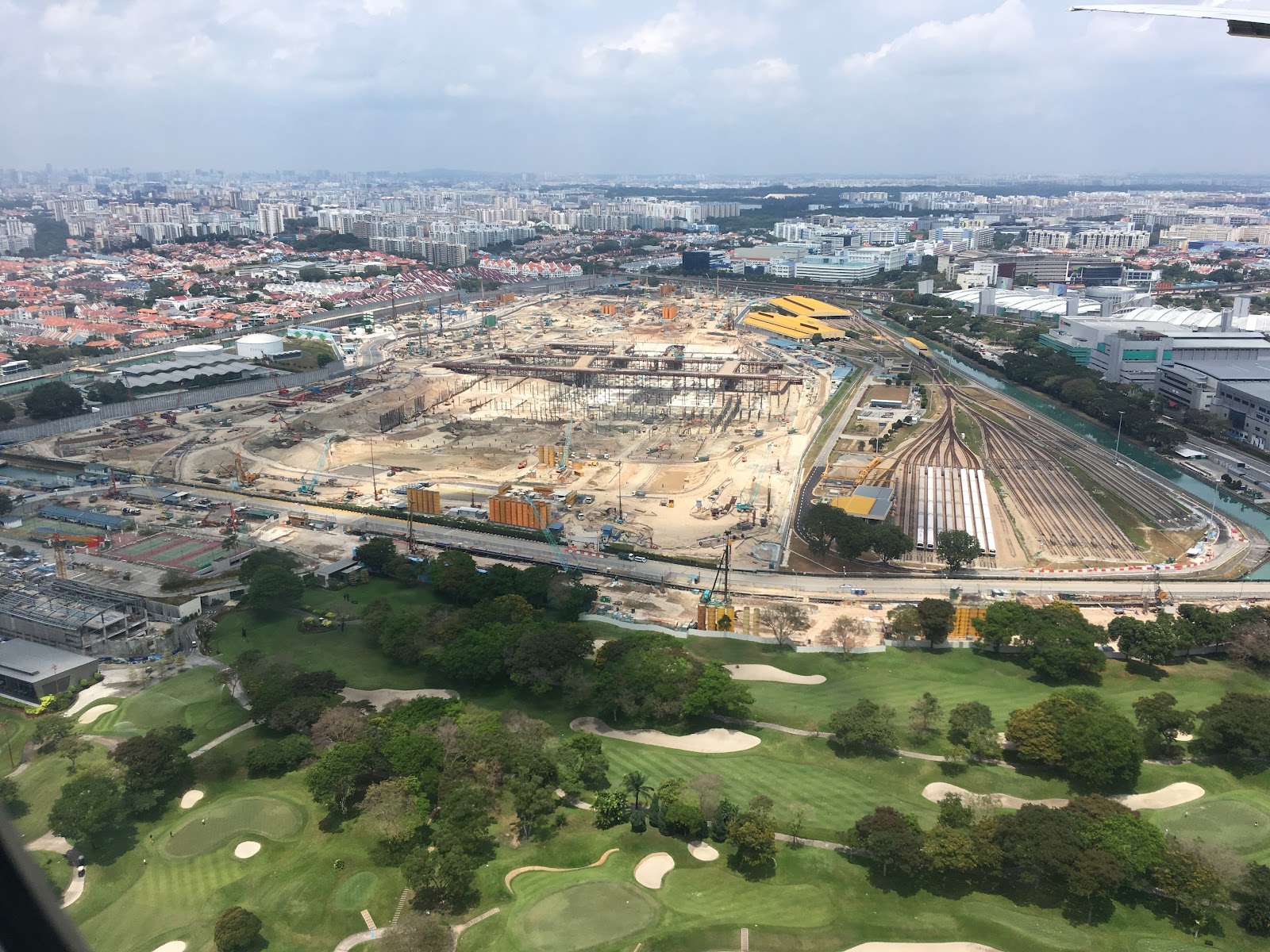 |
| Flying into Singapore |
 |
| A view of the lit city at night from a boat on the Singapore river |
 |
traditional tea and egg with kaya toast (not pictured)
on our first day in the country |
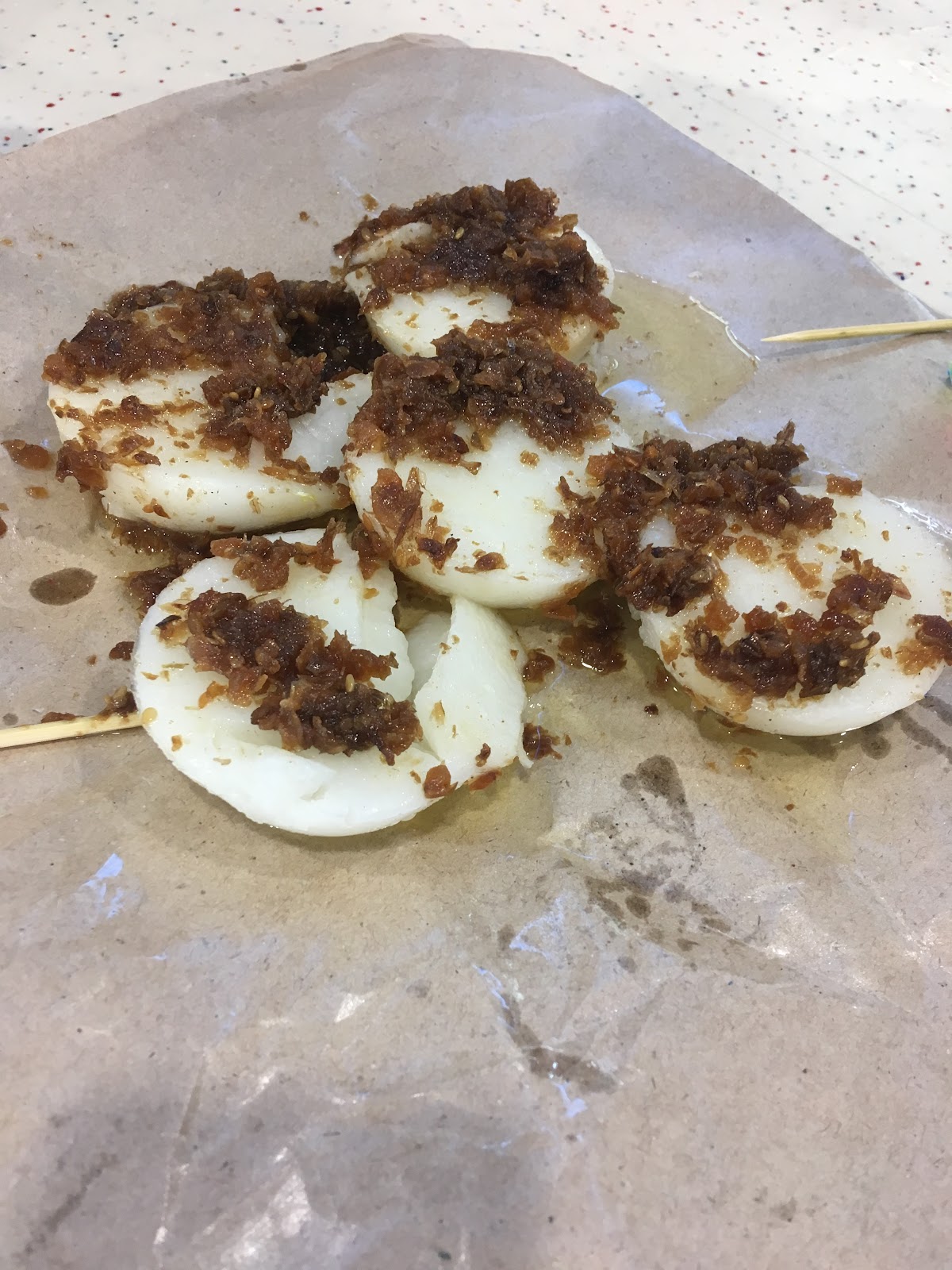 |
a squishy white, spiced treat one morning
at one of the markets we visited |
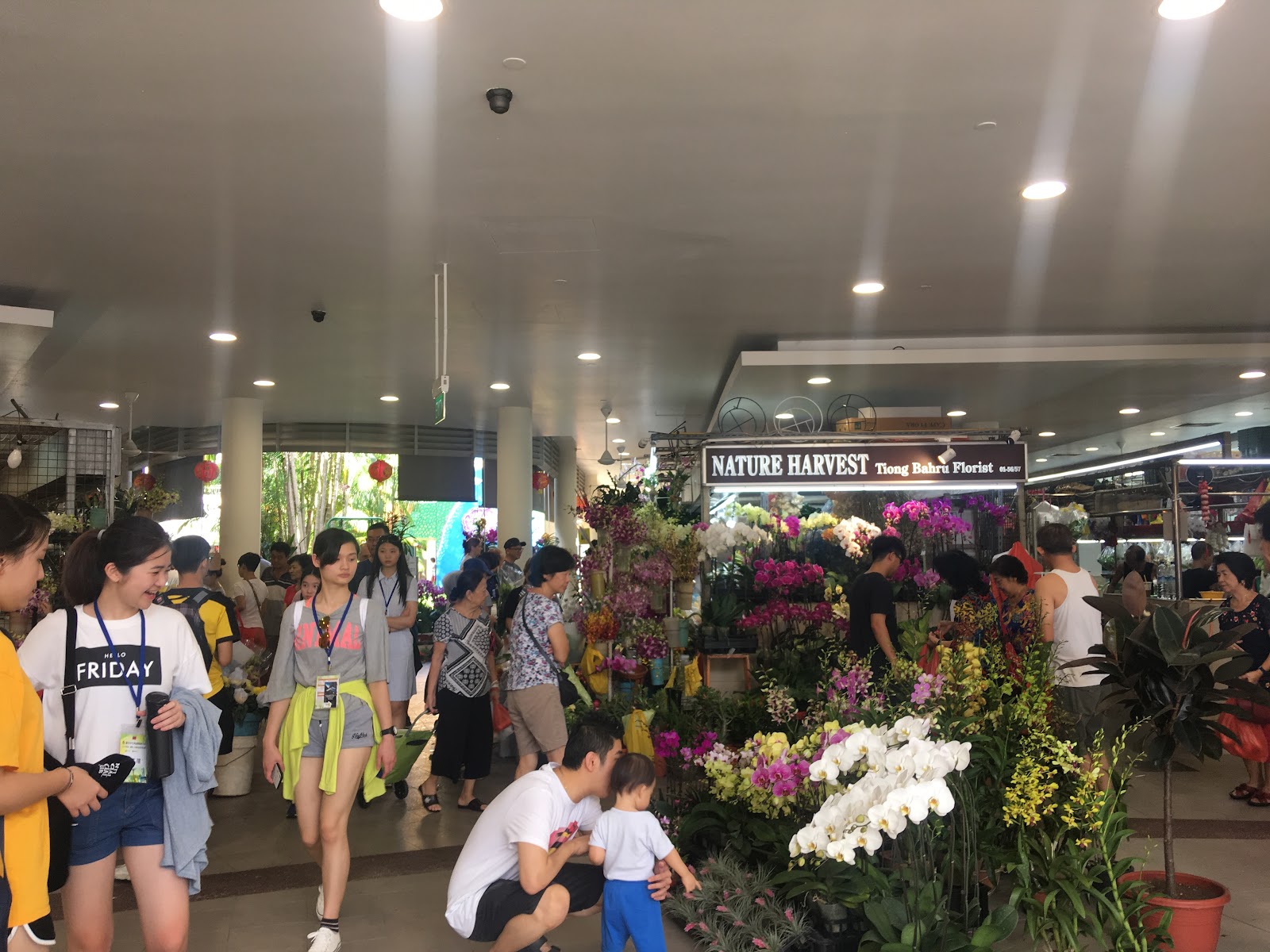 |
| A Singapore market |
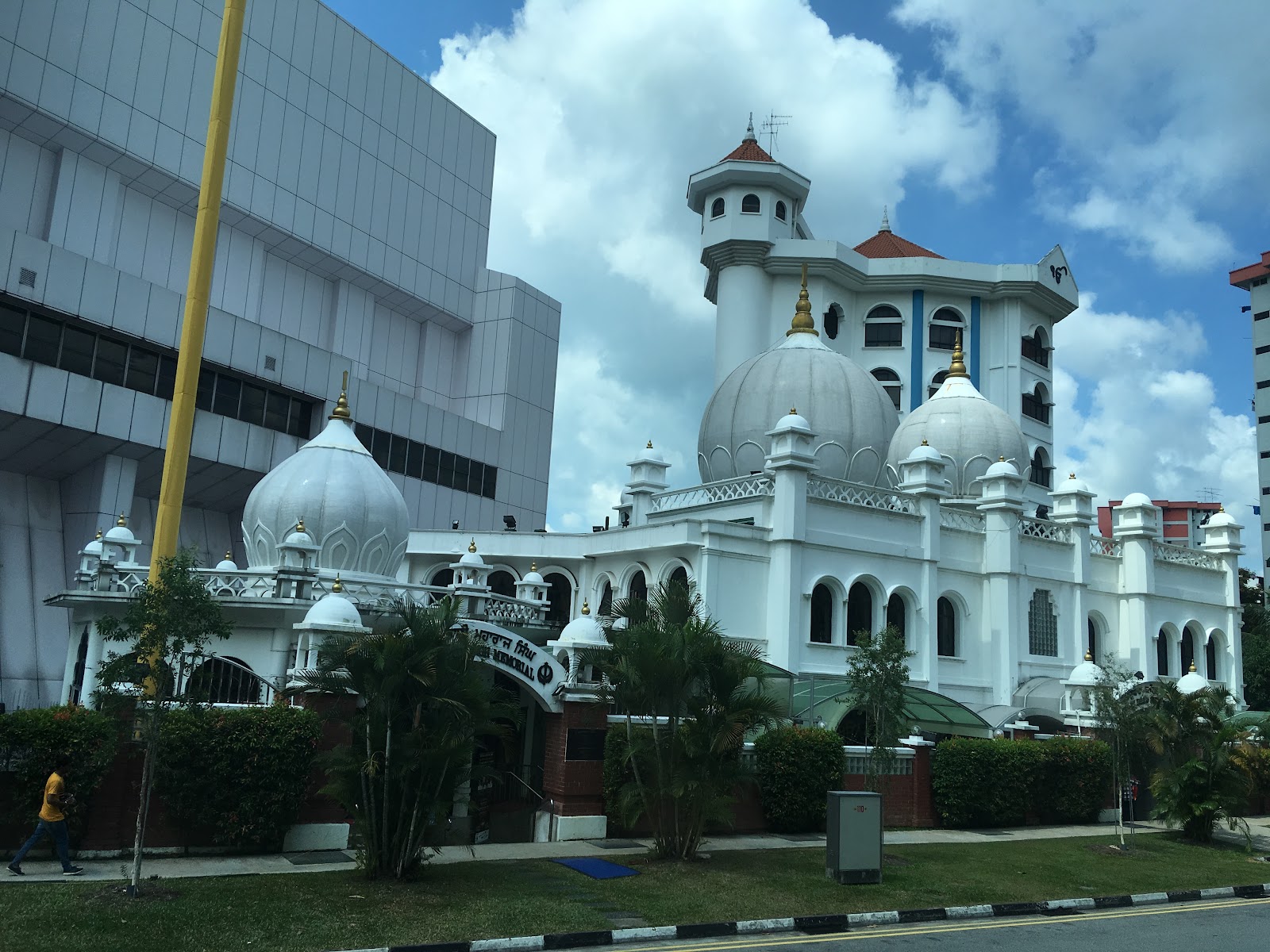 |
| A photo of an unknown building in the city |
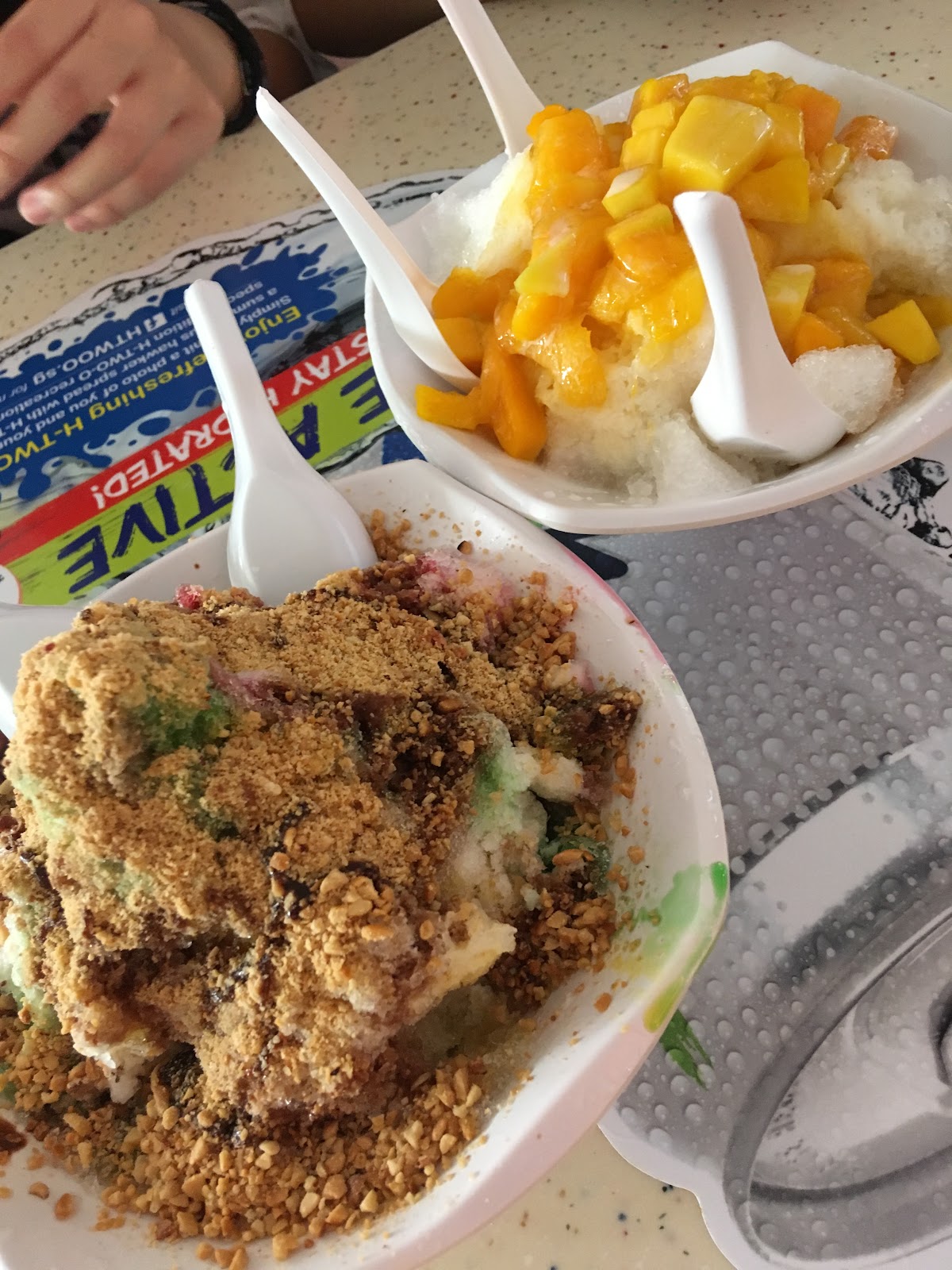 |
| Shaved ice in a market, very different from that in Taiwan |
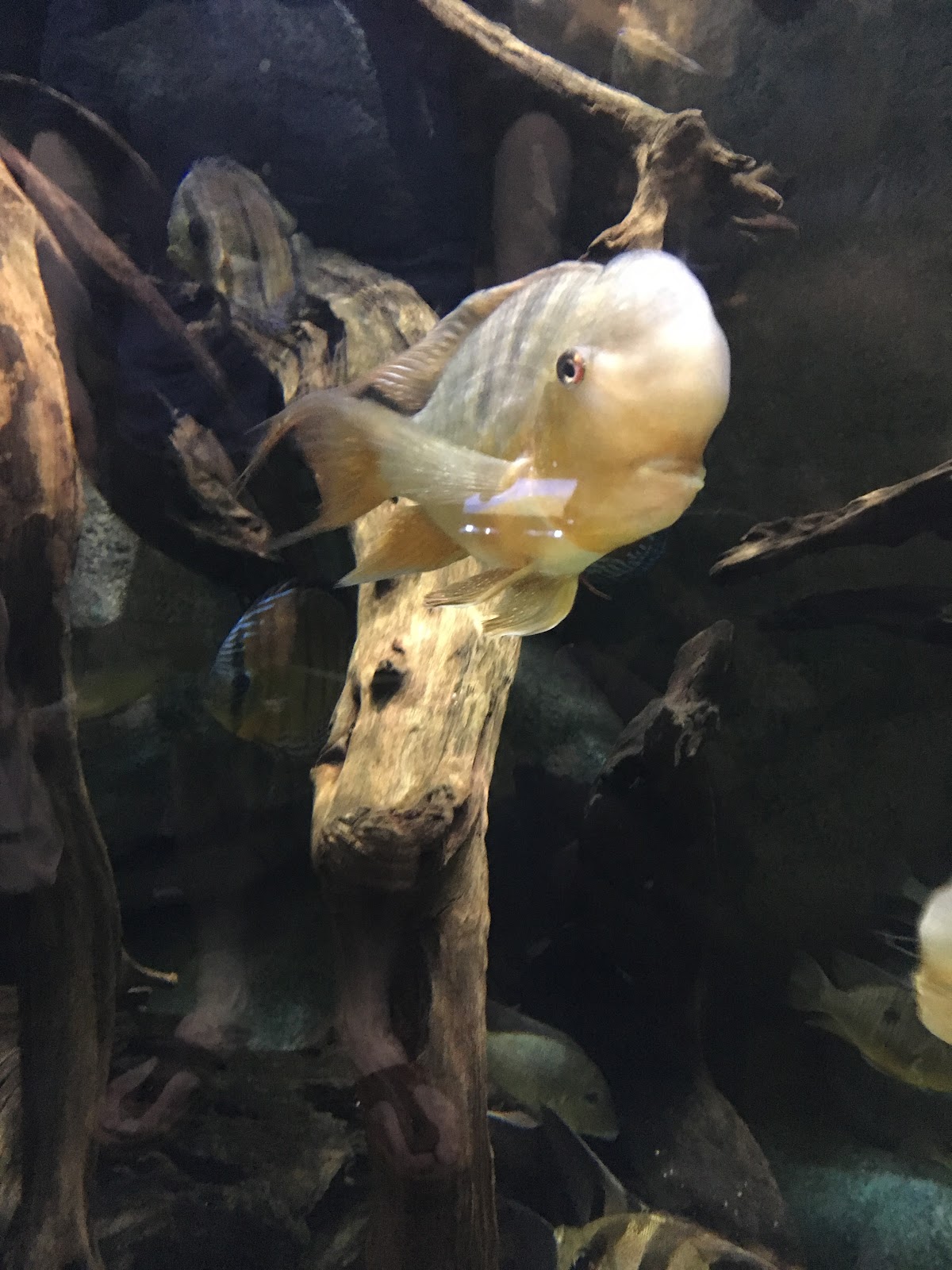 |
| A fish at the Sentosa Aquarium |
 |
A familiar face on Sentosa island. It turns out there are
slappy cakes in several exciting places all over the world, but of course
the original is in Portland |
 |
| A majestic hammerhead in the aquarium |
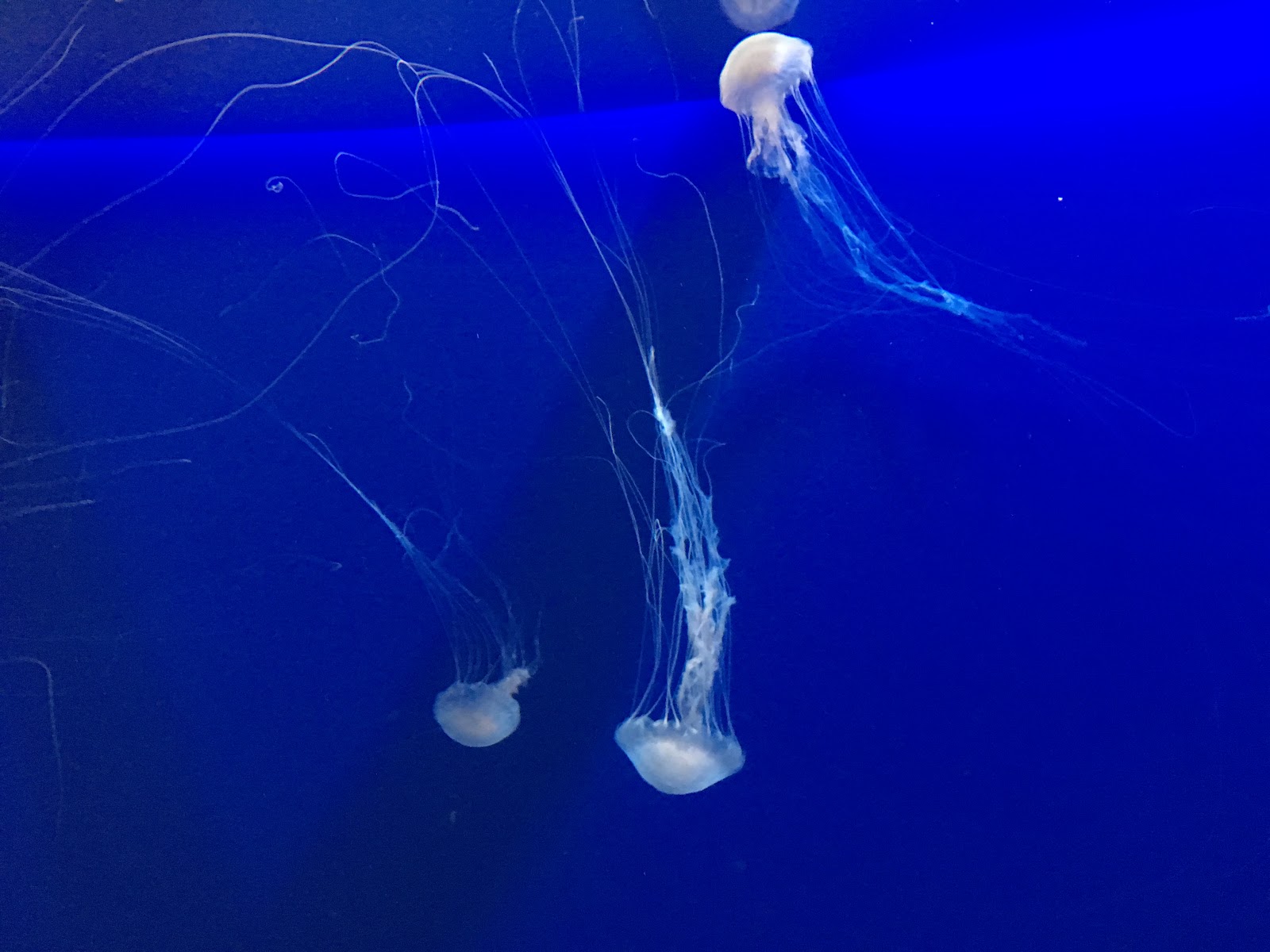 |
| jellyfish |
 |
A sunset watched from a piece of paradise on the
most southern beach of continental Asia |
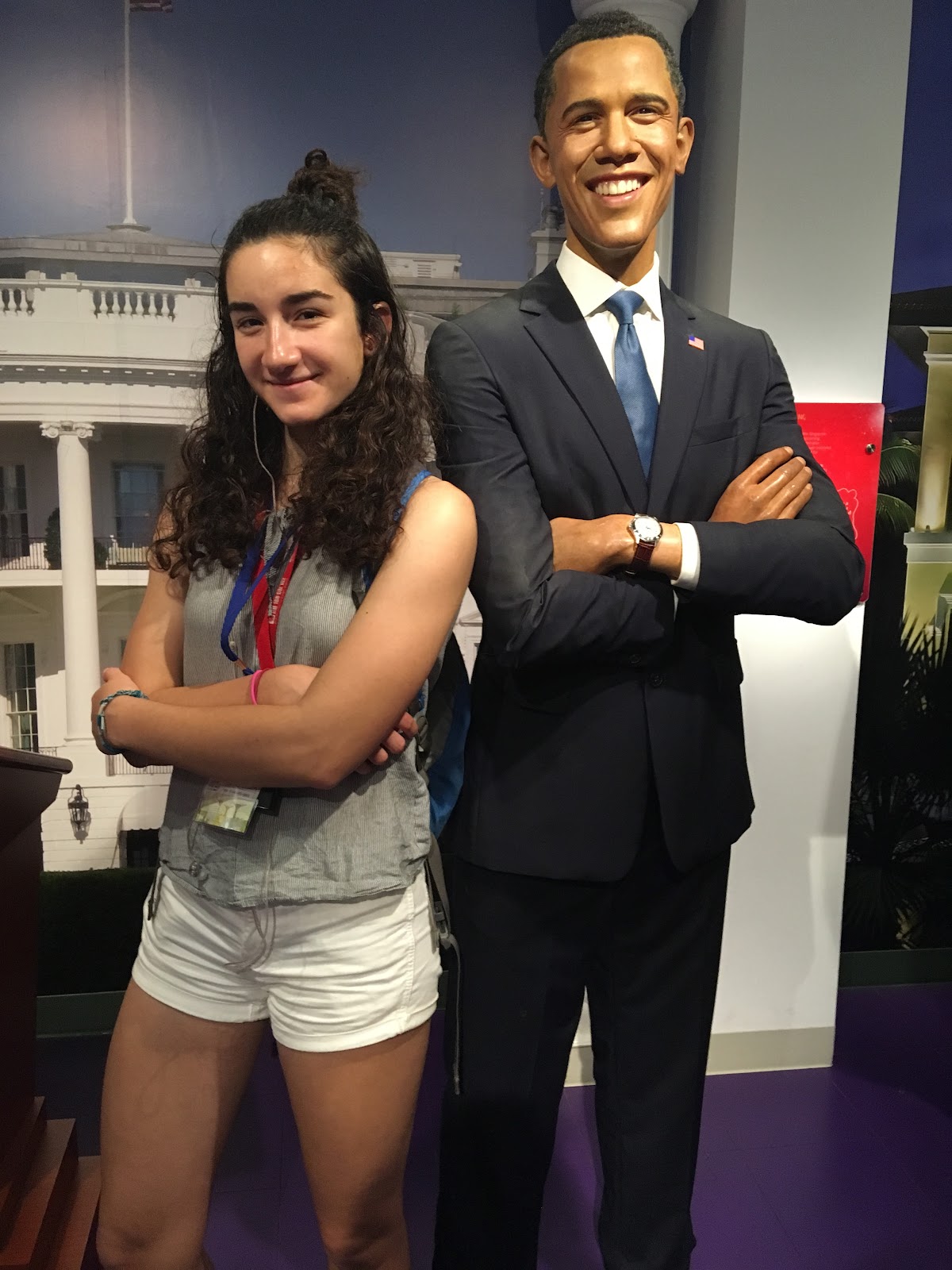 |
Posing with a somewhat creepy wax version of my
country's former President |
 |
| My friends and I posing with a very serious Hugh Jackman |
 |
| Part of an interesting light and water show seen from the Sentosa beach |
 |
School kids in uniforms flying kites and a huge park sitting
on the roof of a building along the harbor, an encompassing
view of the city behind them |
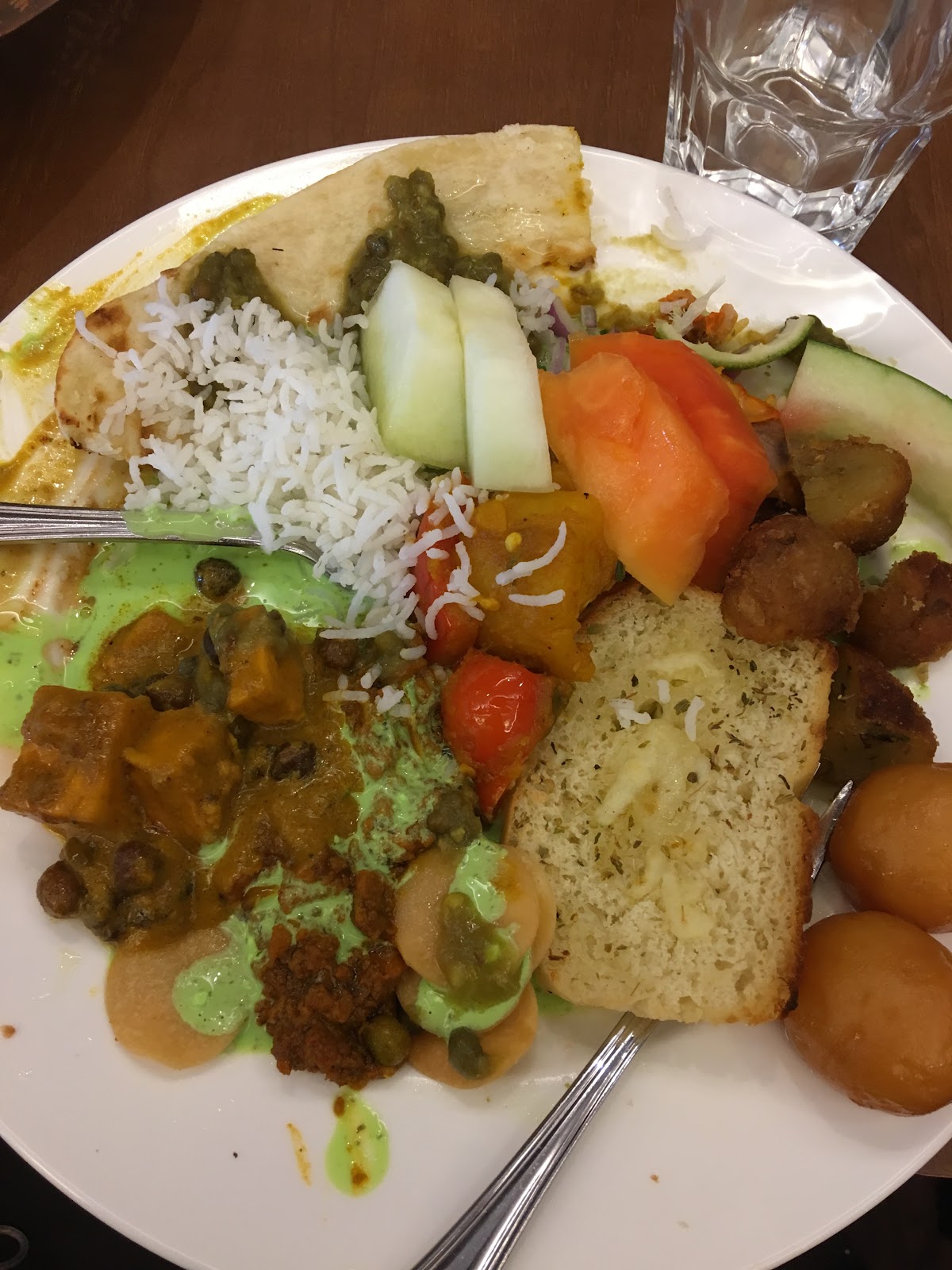 |
Just one of my three full plates of indescribably flavorful,
simply incredible Indian food |
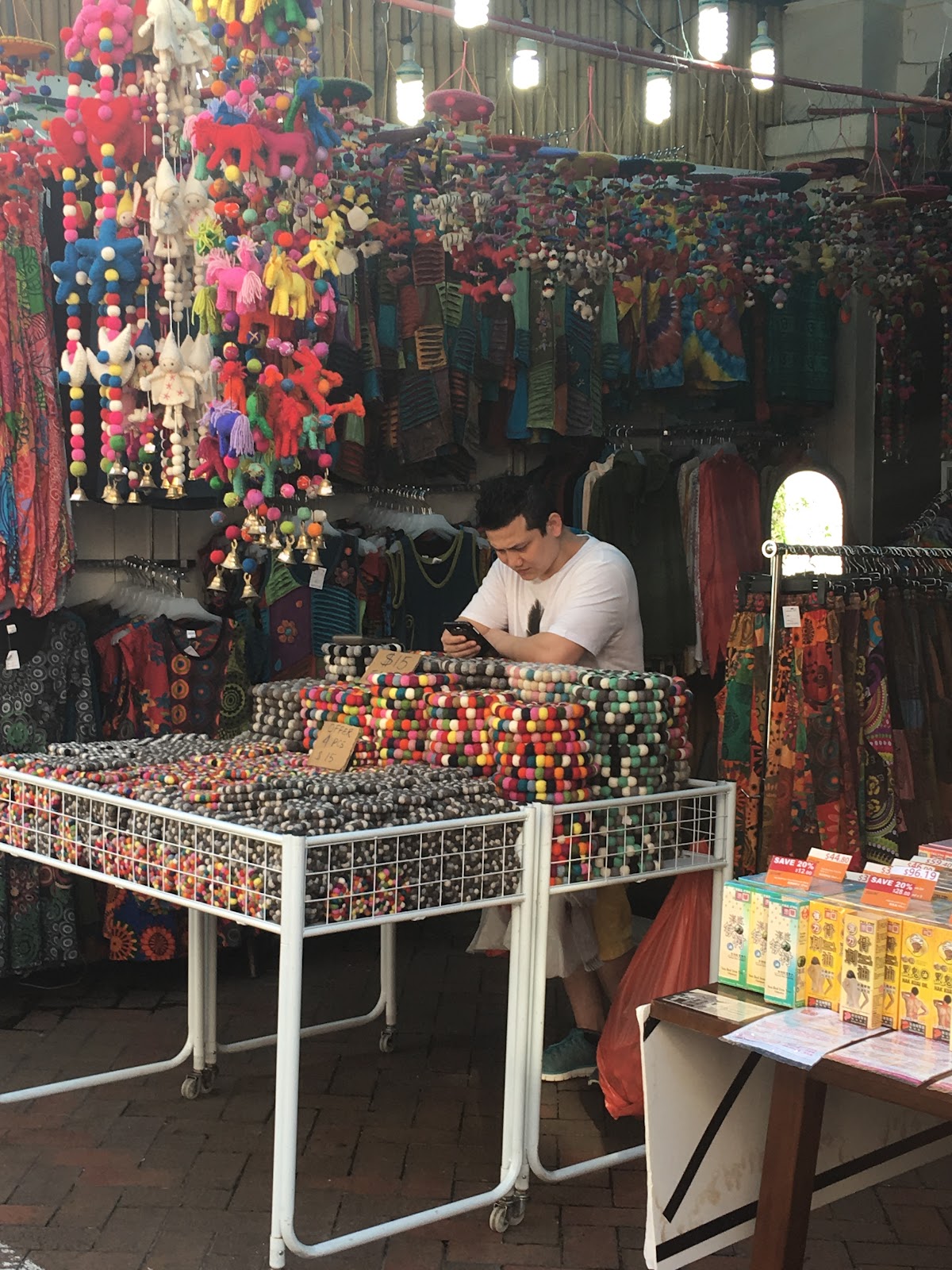 |
| A small shop in Singapore's Chinatown |
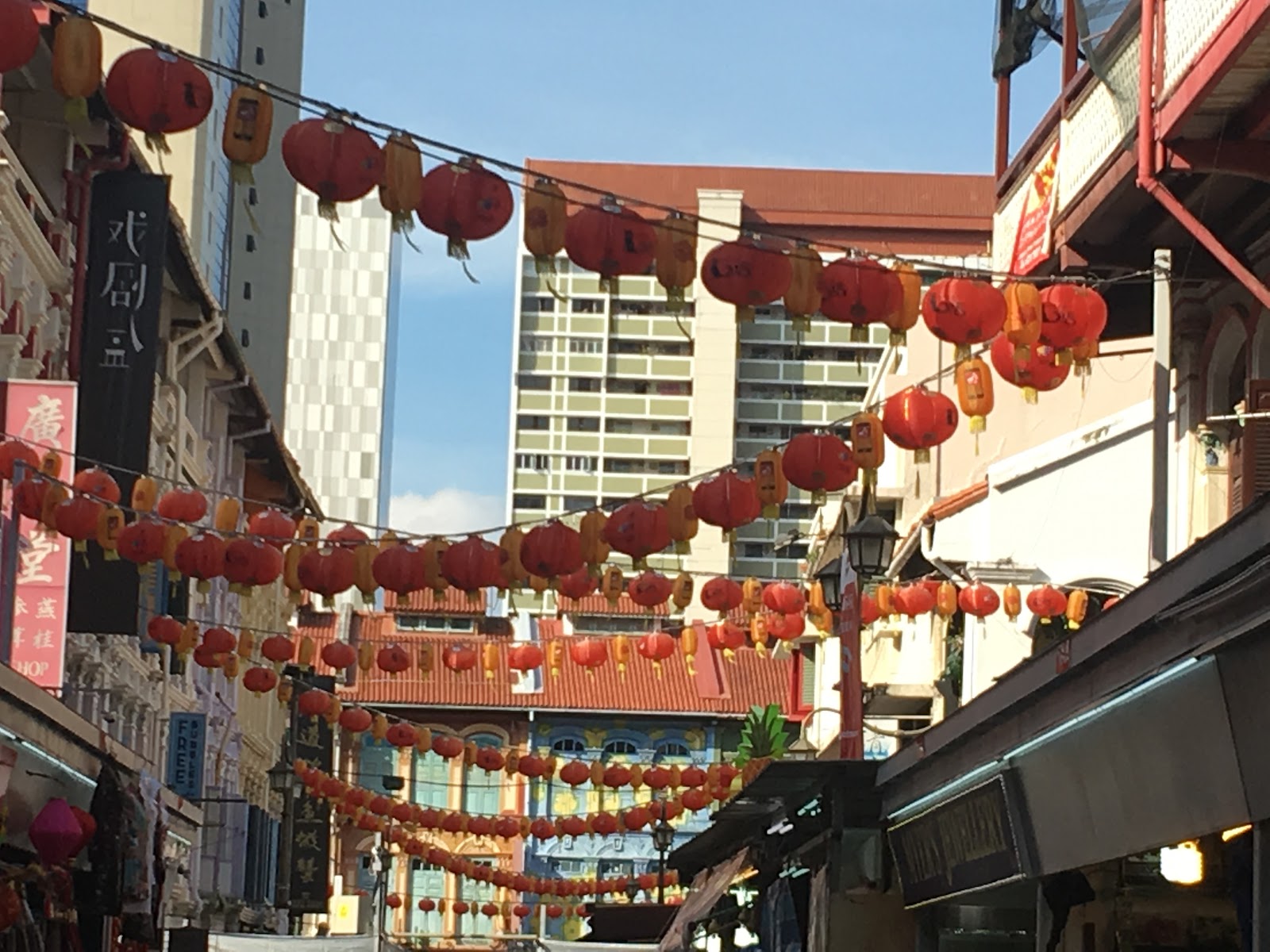 |
| Chinatown |
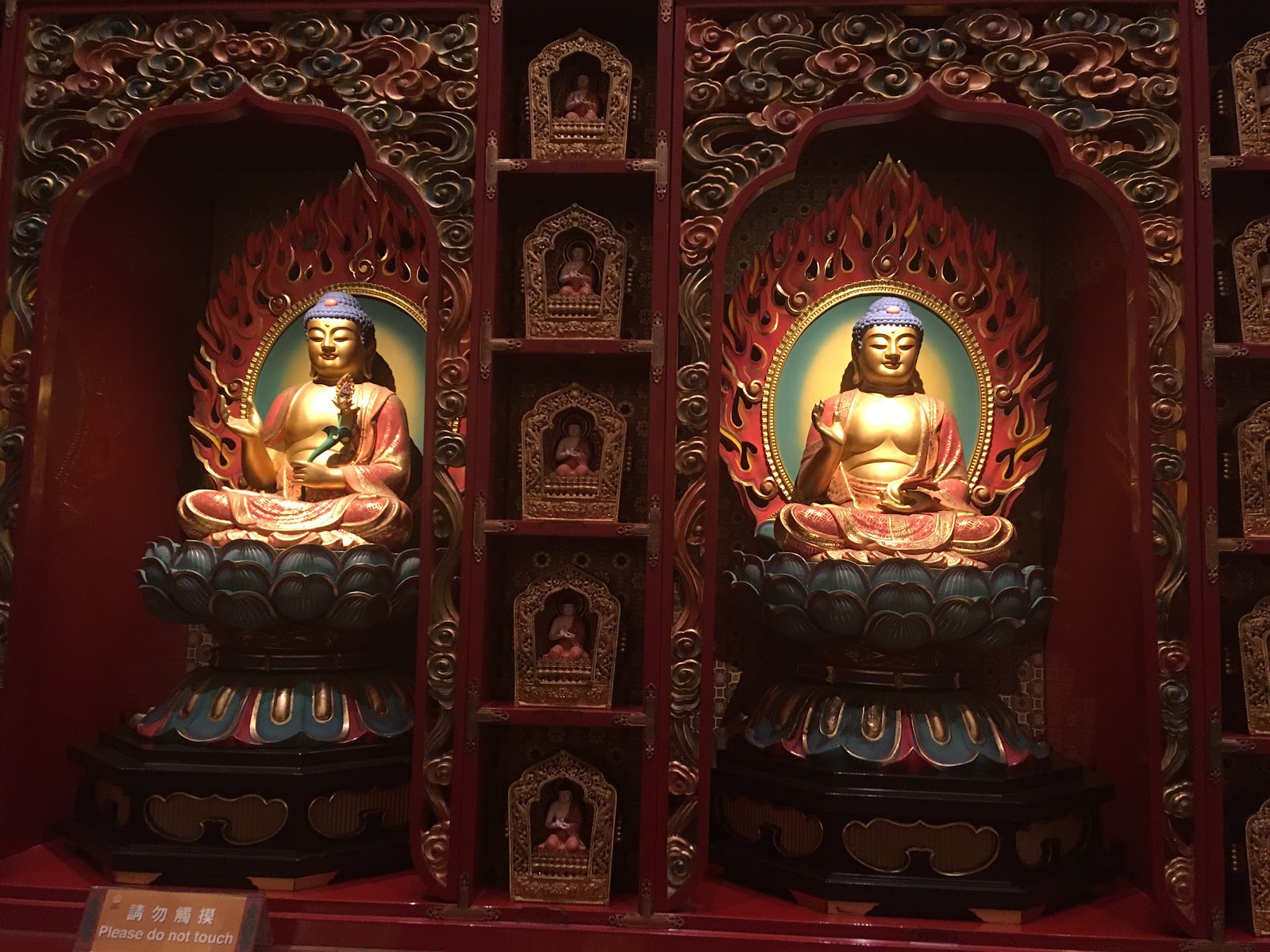 |
tiny inlaid statues, part of a wall made up of the same statues,
in an Indian temple next to China town |
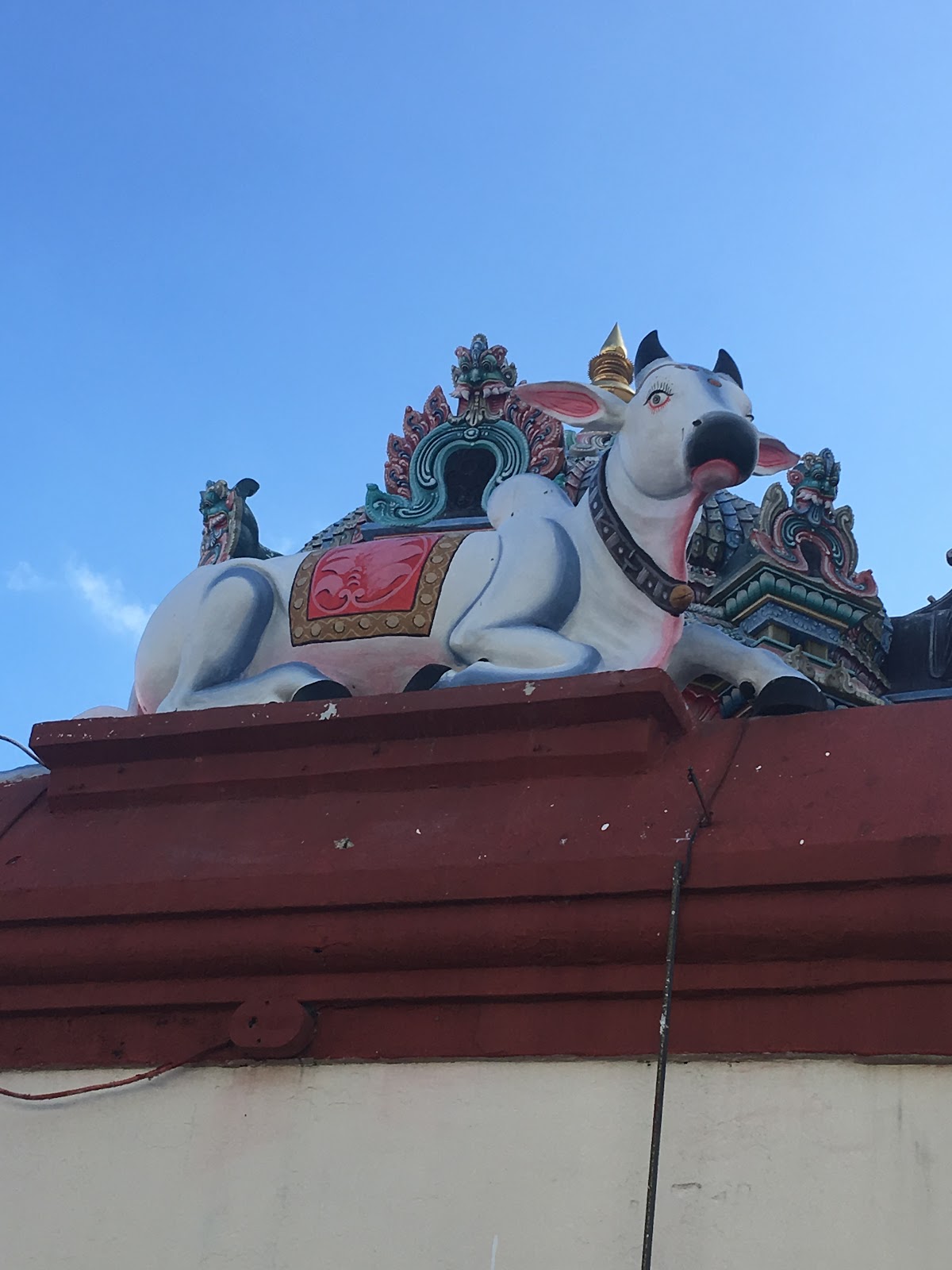 |
A blue cow staring down it's nose at pedestrians
walking along the wall of the temple he guards |
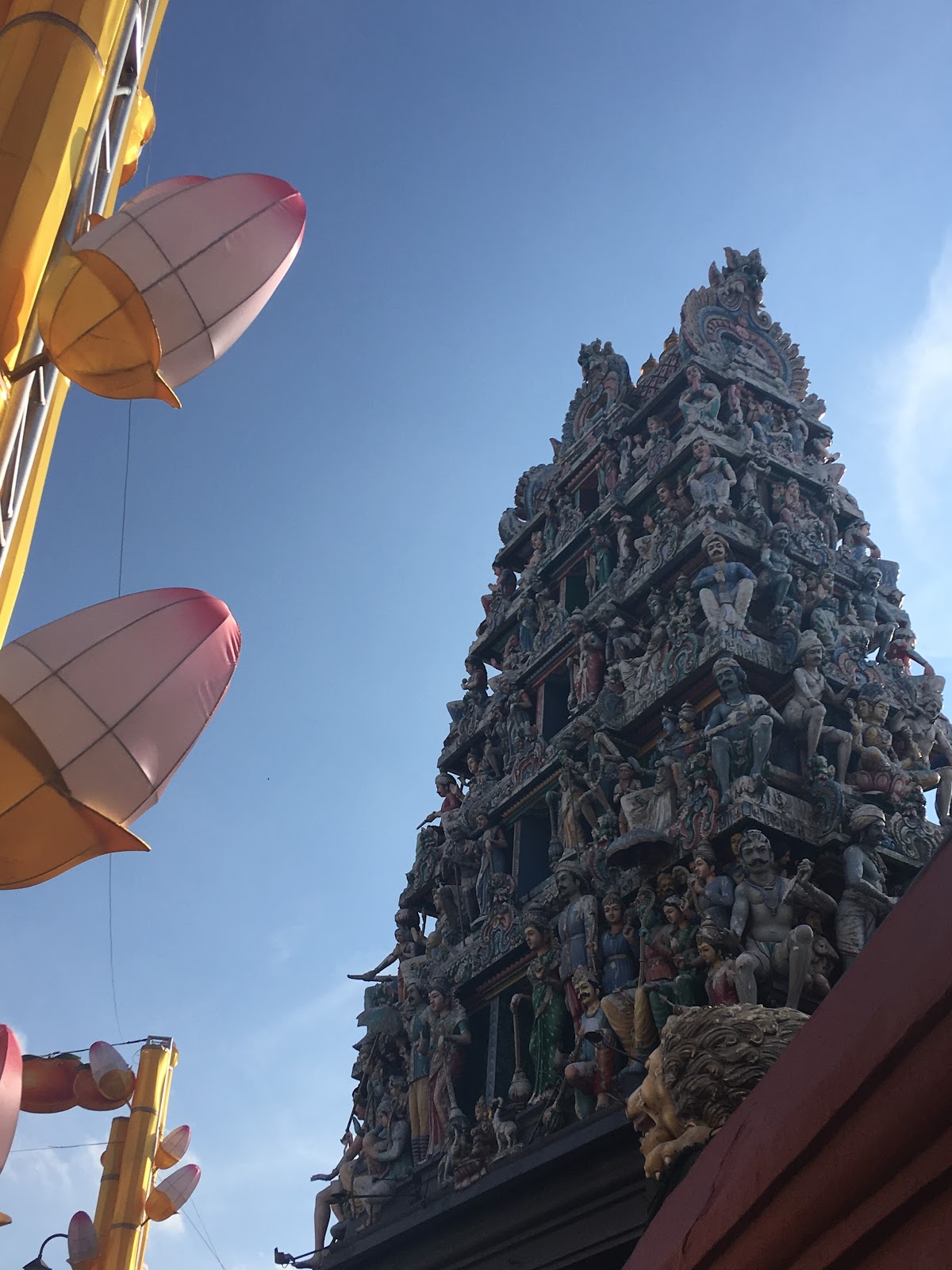 |
Big cloth and metal blossoms that decorate the
street lights and poles in China town, next to the
giant tower of people residing above the entrance to the Indian temple |
 |
A view of the sky trees just as the sun was going down
and they started to light up |
 |
| Just some of the incredible street art around the Arabic neighborhood |
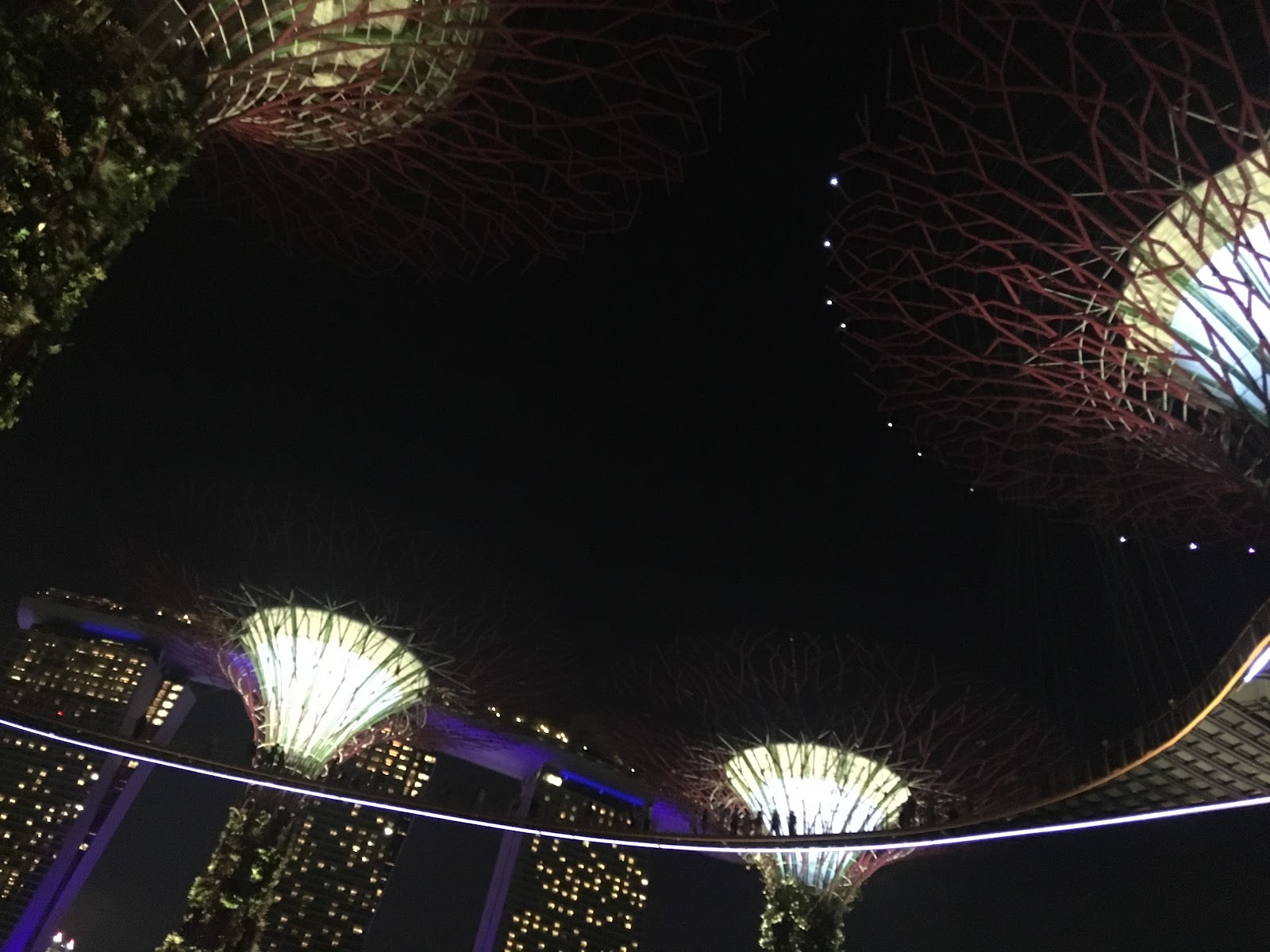 |
a few of the enormous skytrees, and the bridge stretching
between some of them, at night |
 |
| In Little India |
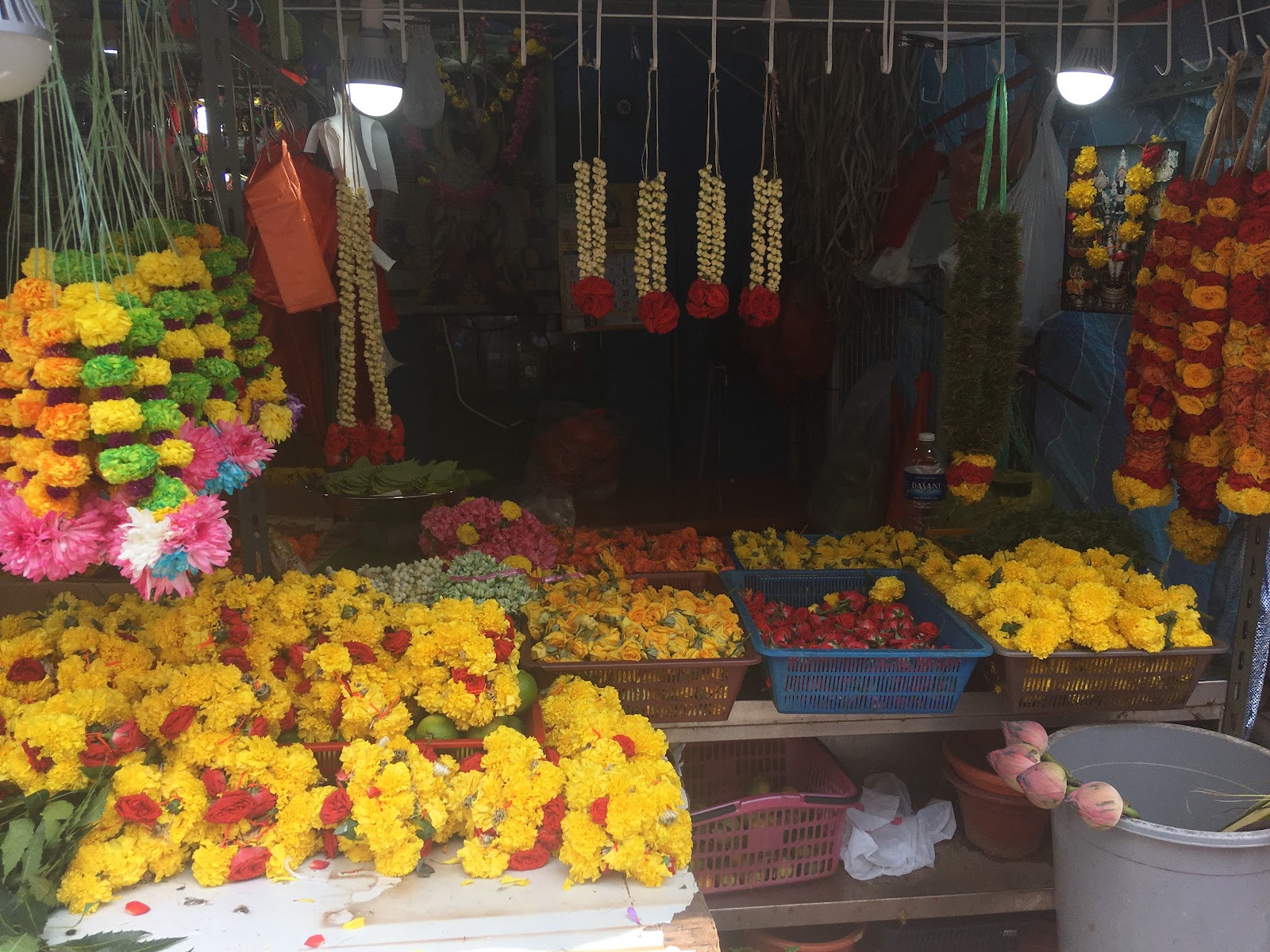 |
| A shop selling flower chains and necklaces in little India |
 |
A Singapore Trolley passing in front of one of the city's
fancier apartment complexes |
 |
| A street near the Arabic neighborhood |
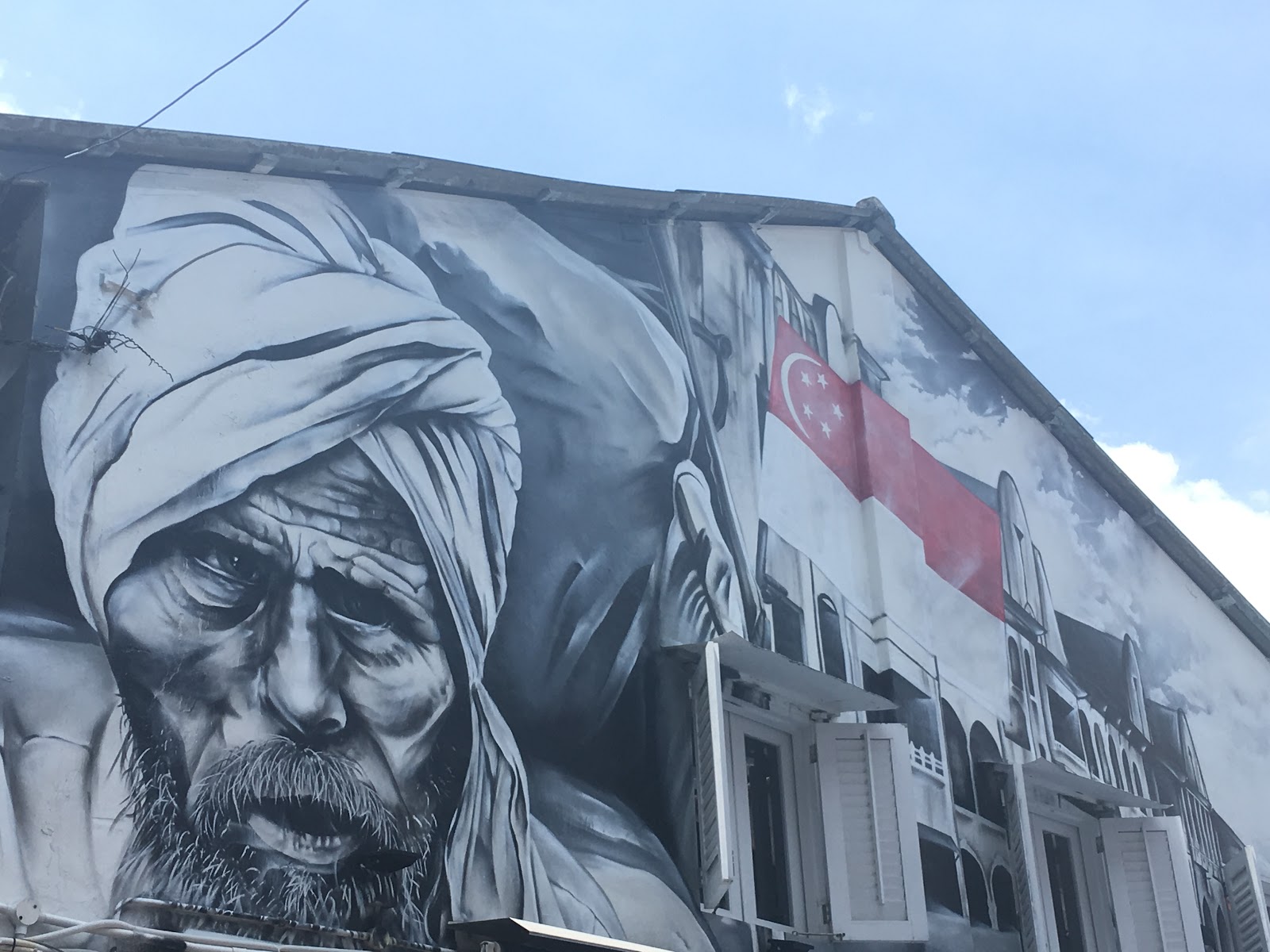 |
More street art, featuring the Singaporean flag. There was a huge
variety of styles along a series of the most luscious, exciting,
and eclectic narrow streets I've ever walked along |
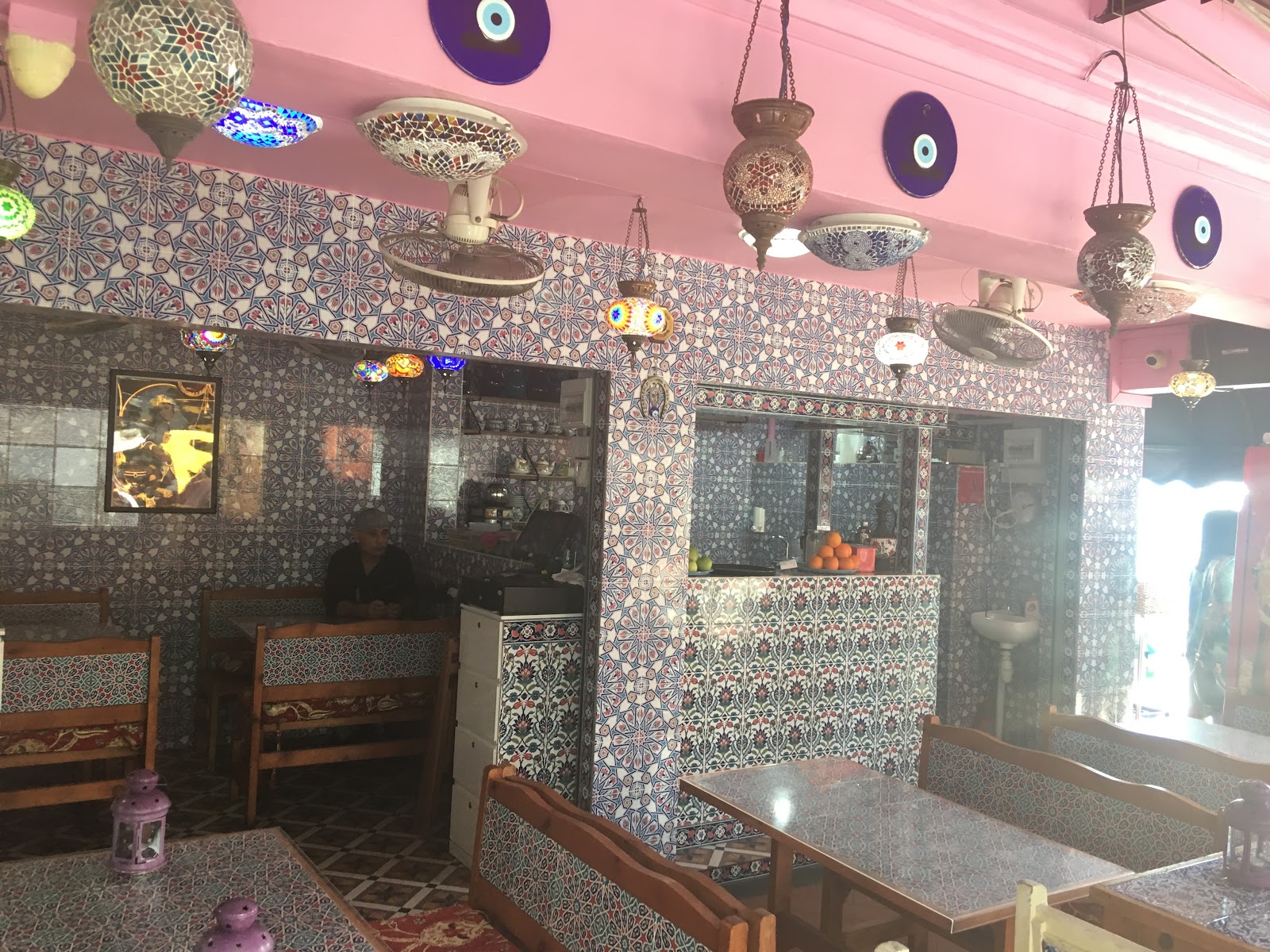 |
A small turkish restaurant. The area was called
the Arabic neighborhood in Chinese,
but I don't know what it would typically be called in English.
The strongest national presence was definitely Turkish |
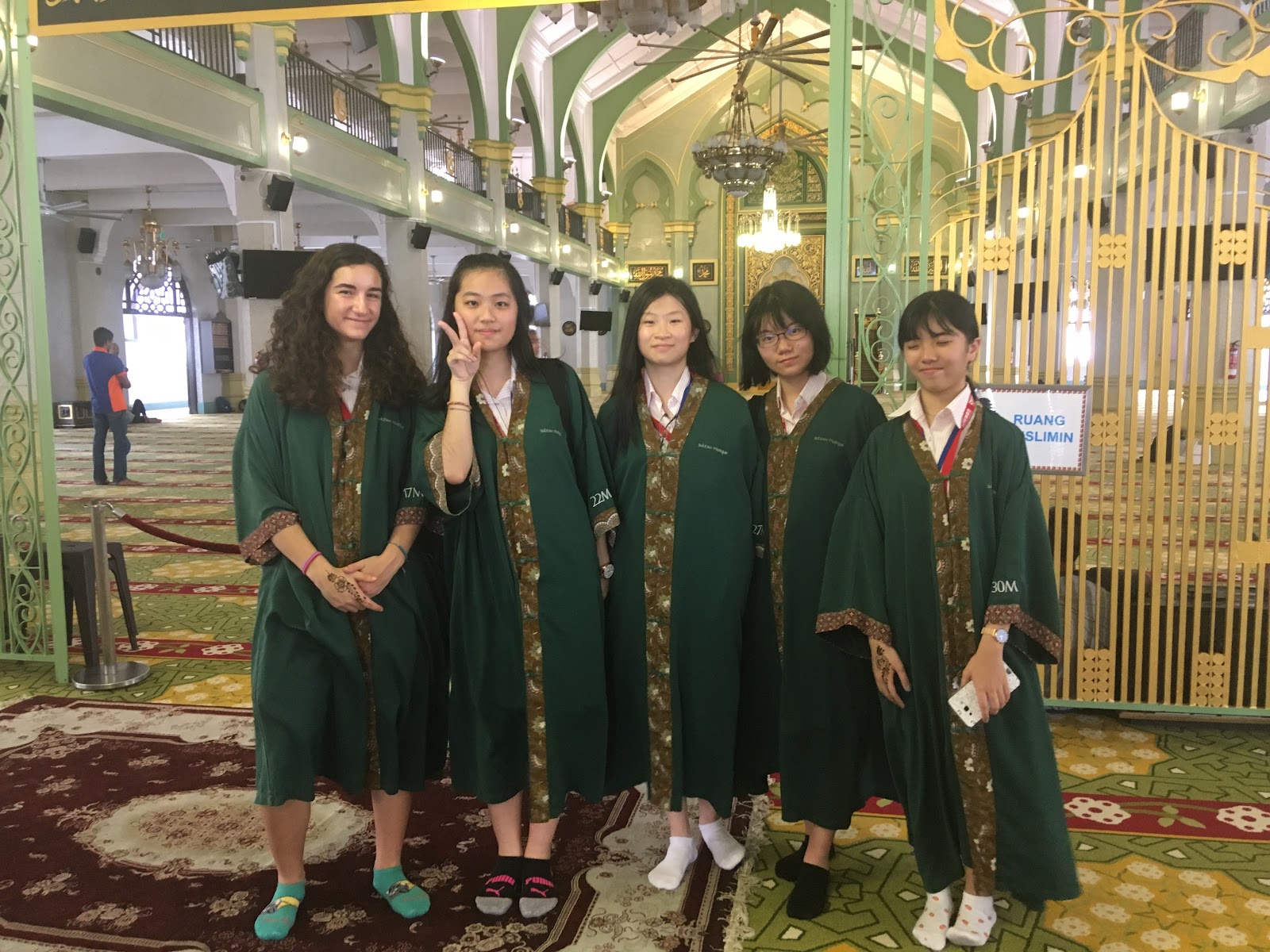 |
In a Mosque with my classmates, wearing the required robes
over our shorts and tanktops |
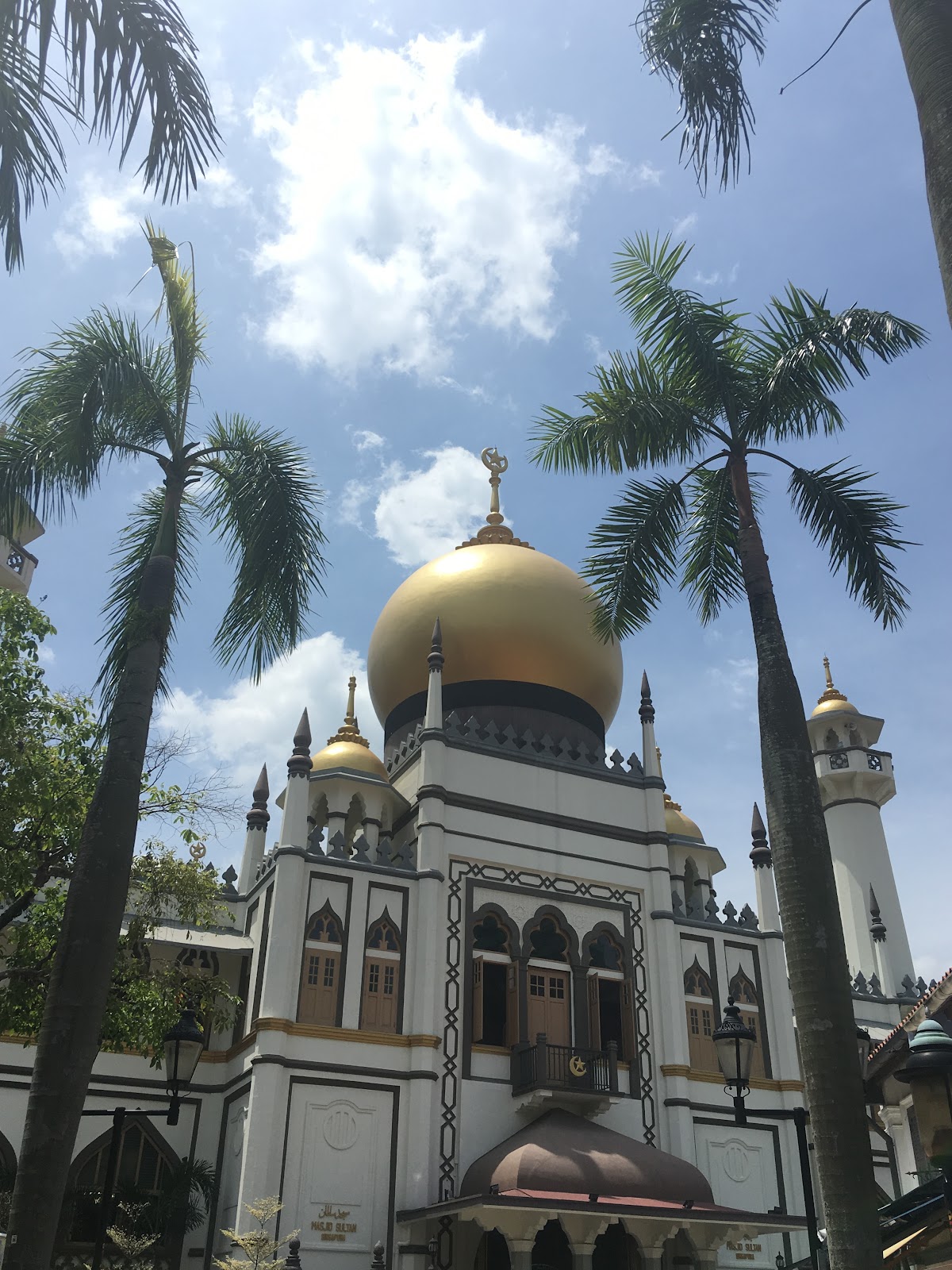 |
| The very impressive Mosque itself |
 |
| The buildings on the street across from the Mosque |
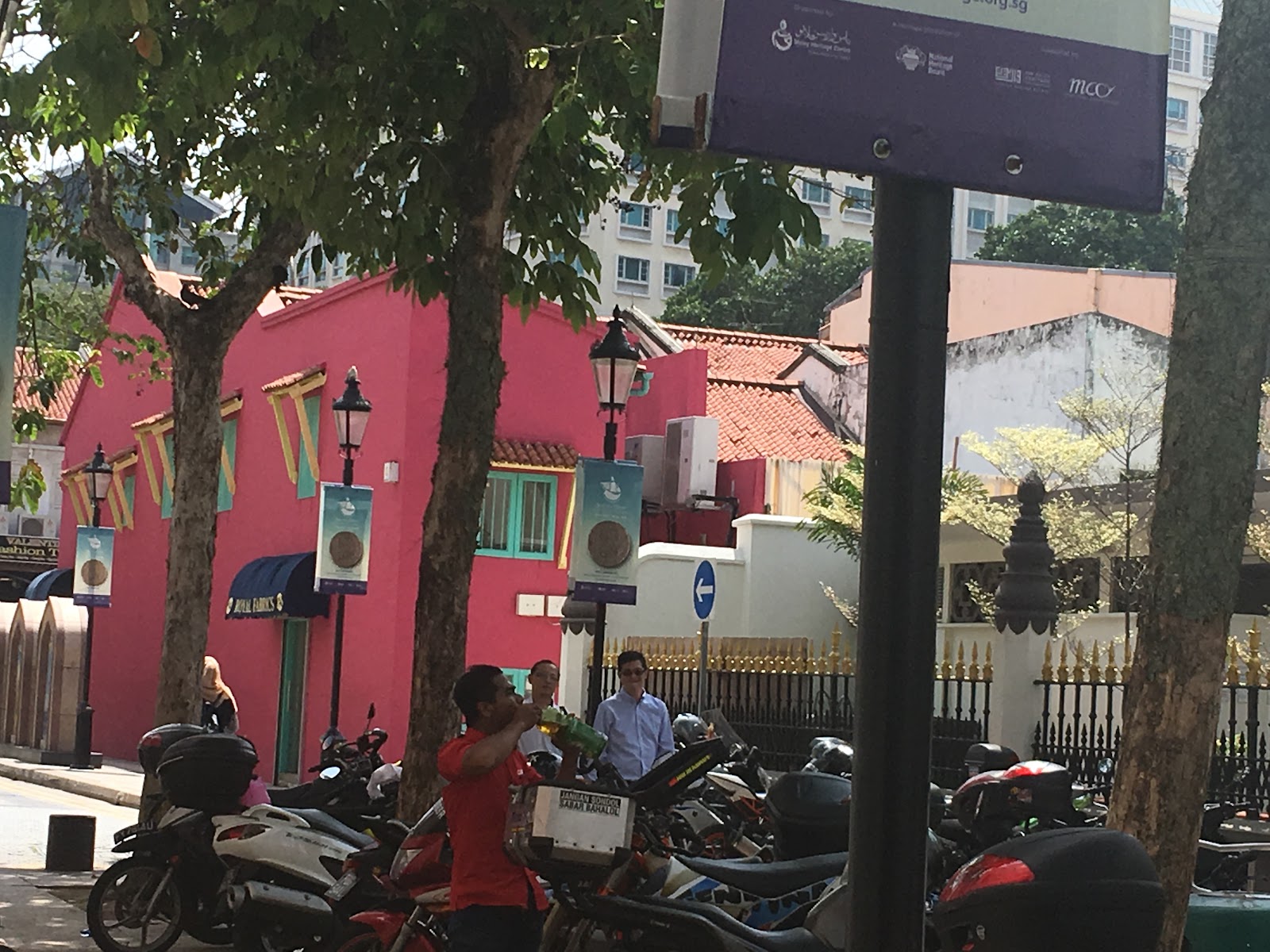 |
| An exhilaratingly bright house next to huge Mosque |
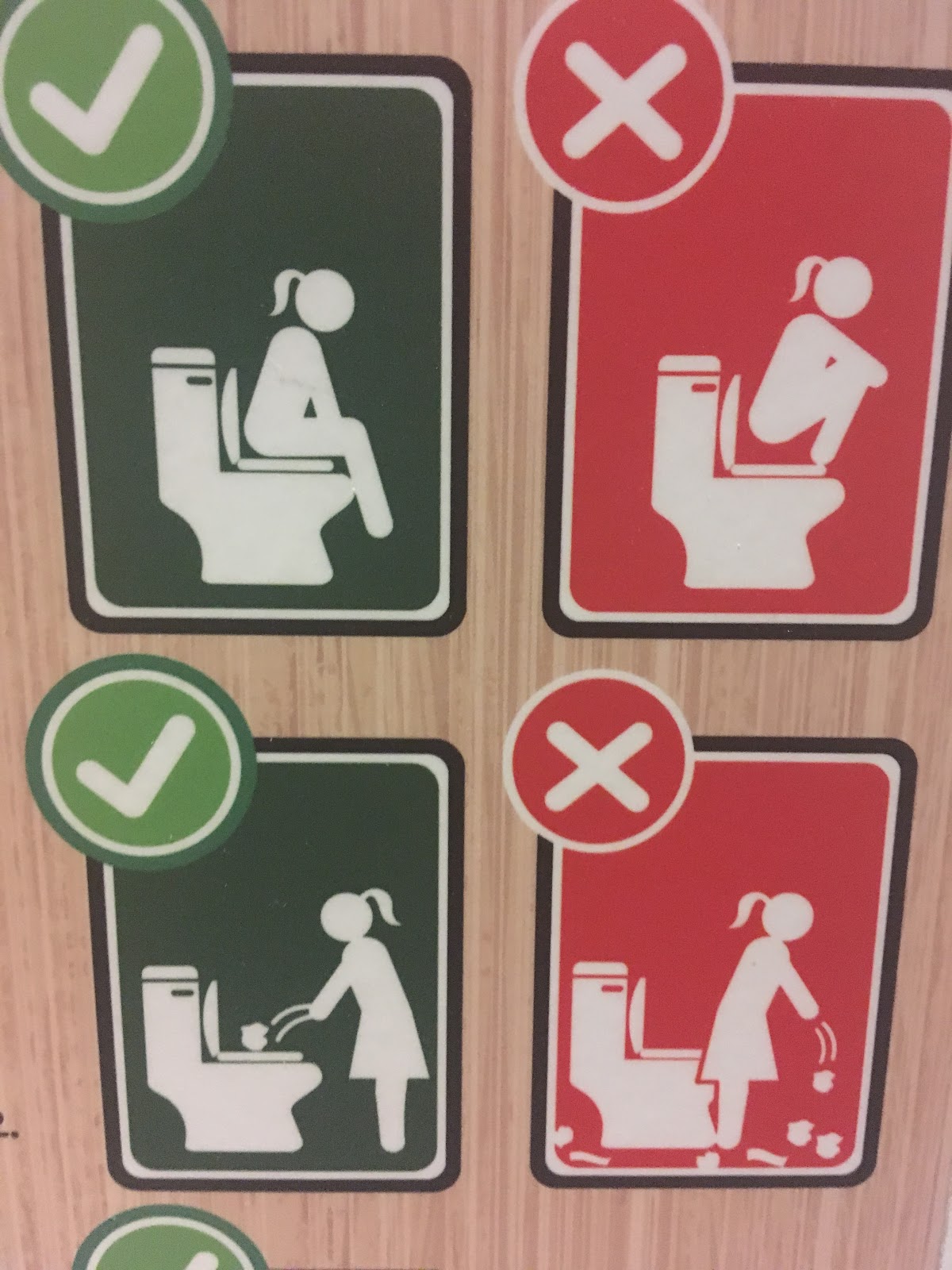 |
A helpful reminder of how to properly use the toilets
in a restaurant bathroom
|
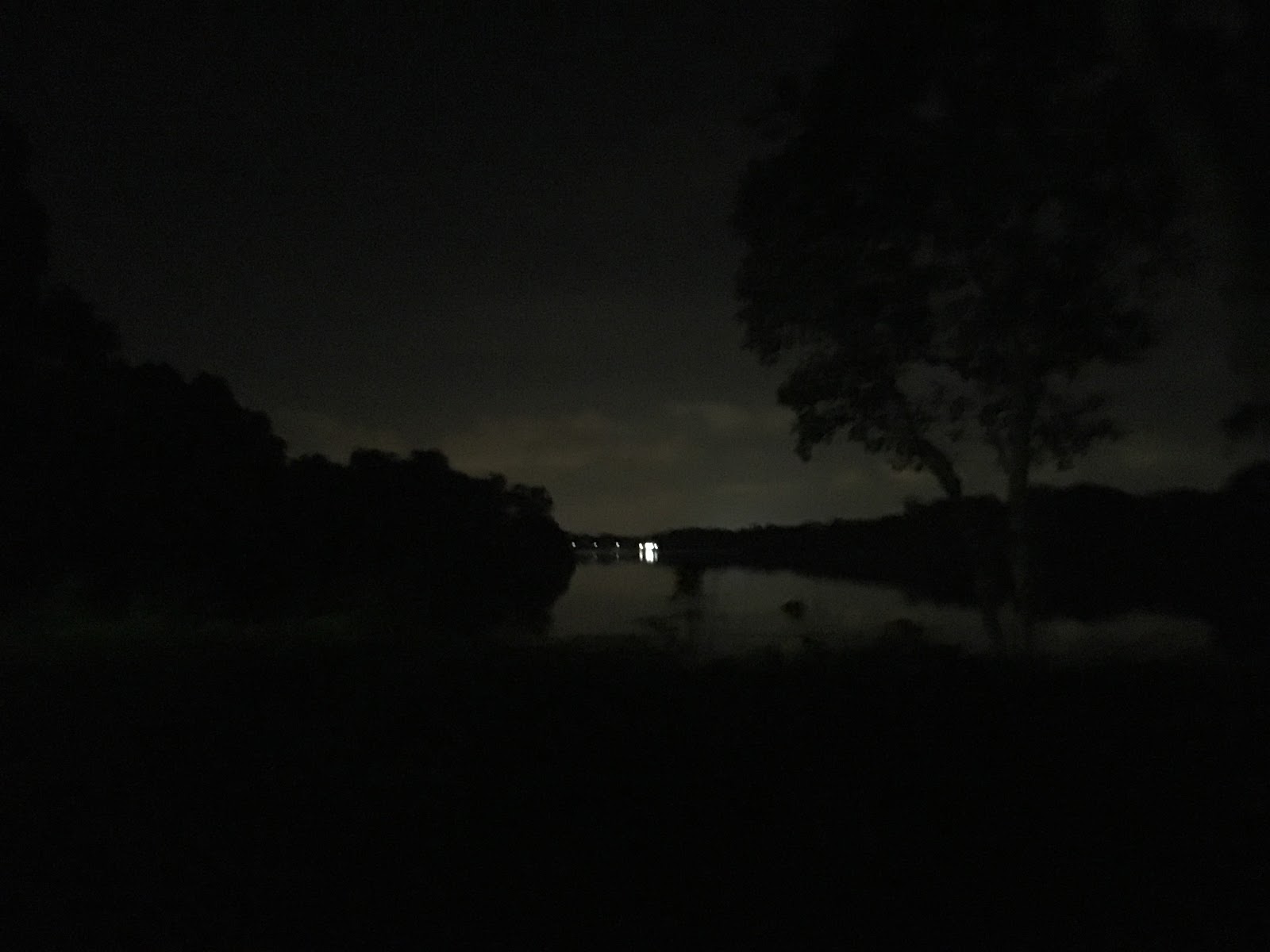 |
| Some poor quality photos at the night Safari: the moon reflected on a lake |
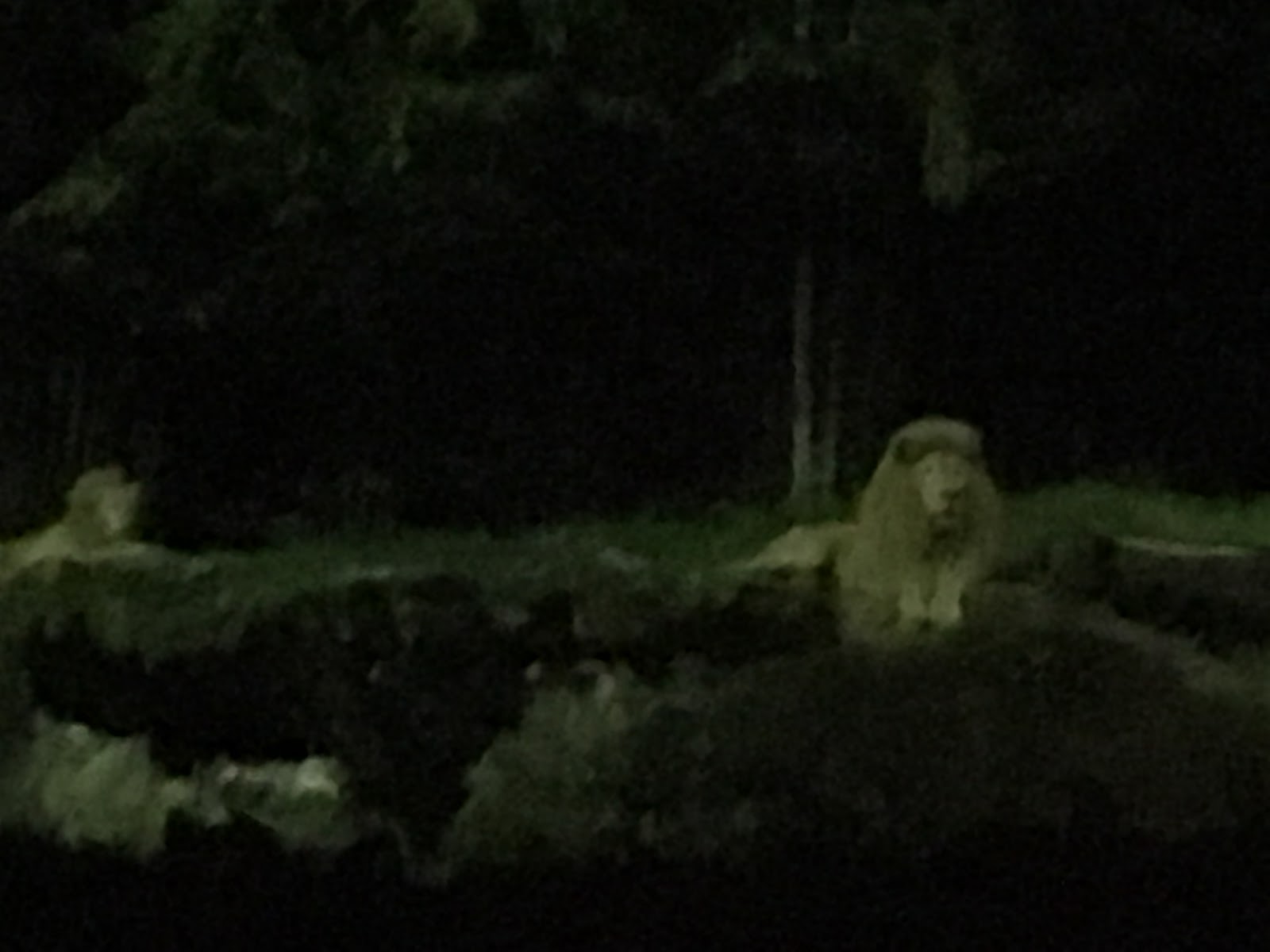 |
| the best picture I have of two of the lions we saw (at least you can see I tried) |
 |
| An elephant eating dinner next to our passing safari jeep |
 |
| The two "durian" performing arts centers from the park/roof halfway up the buildings |
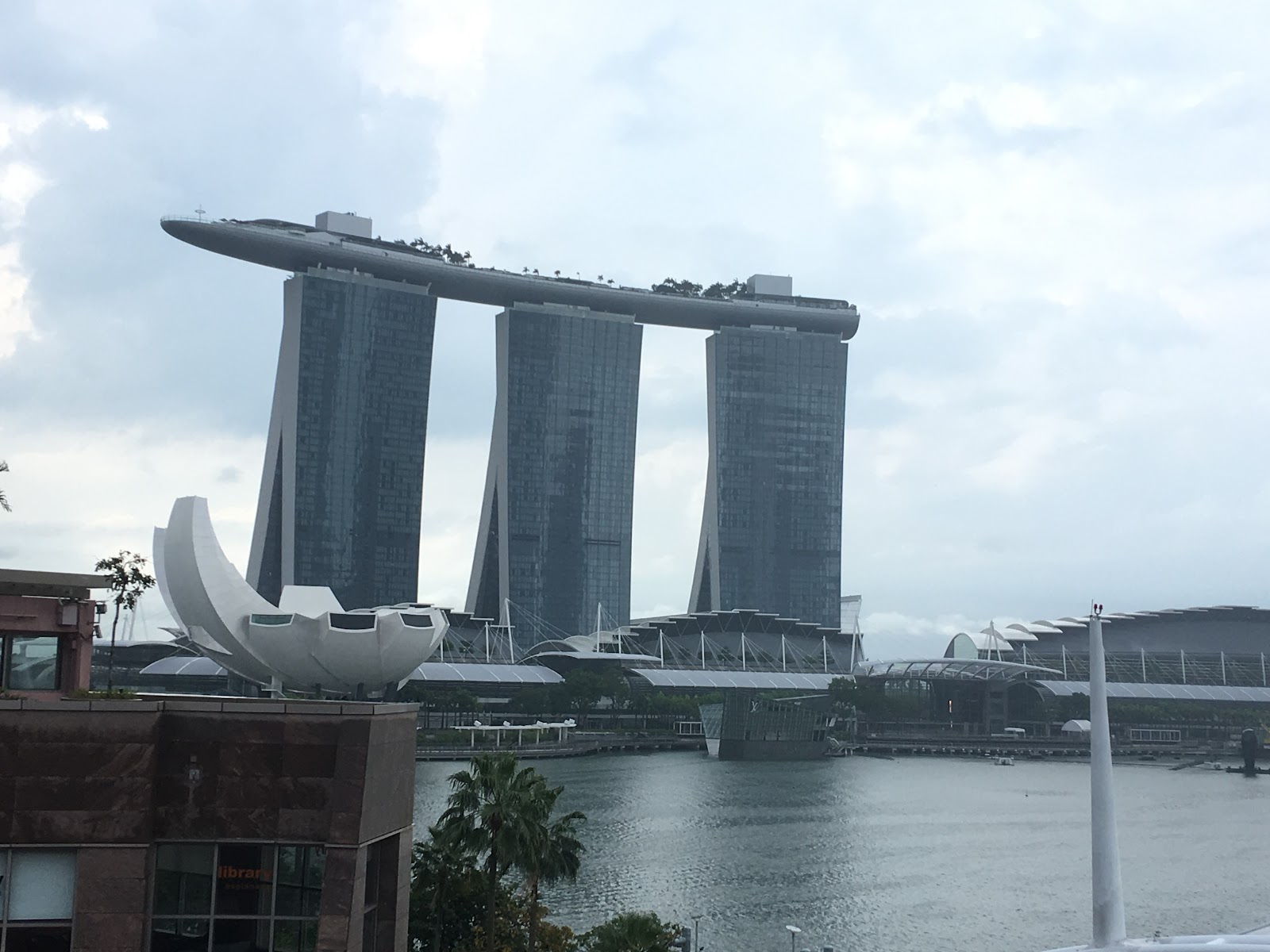 |
| A view of the memorable riverside buildings during the daytime |
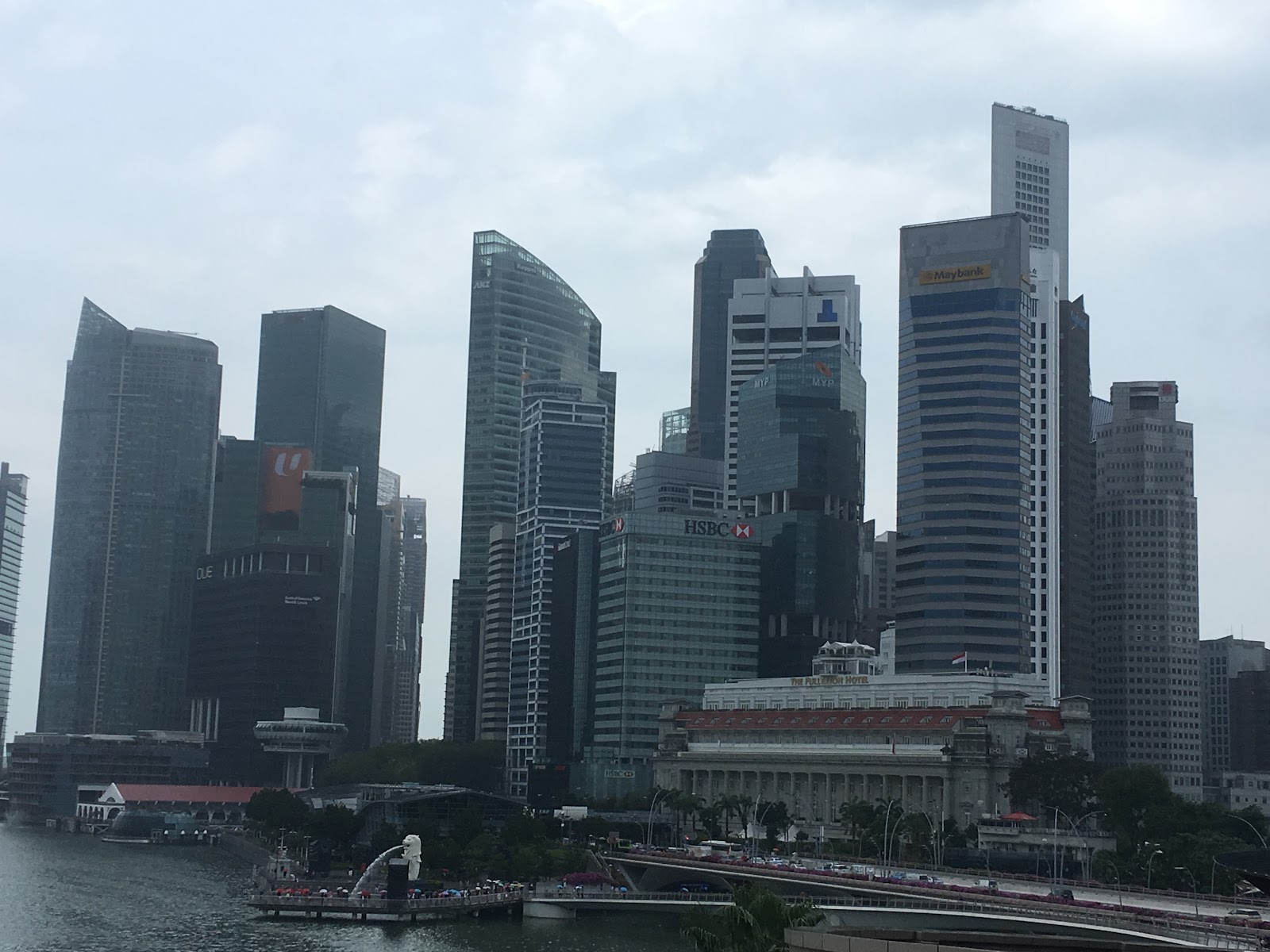 |
| The impressive, shiny Singapore skyline |
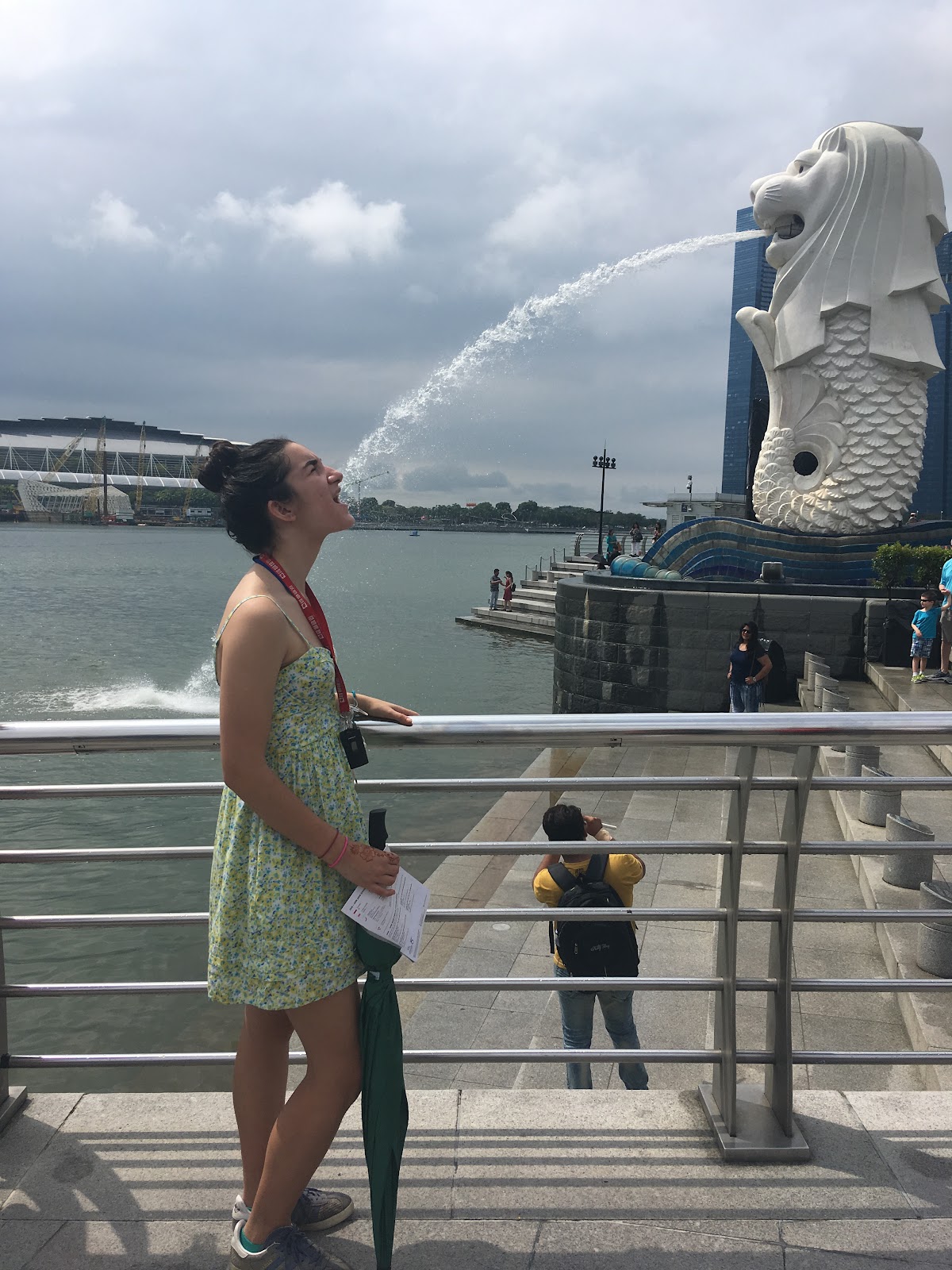 |
trying, like the rest of my classmates, to drink the spit
of the regal Singapore Merlion |
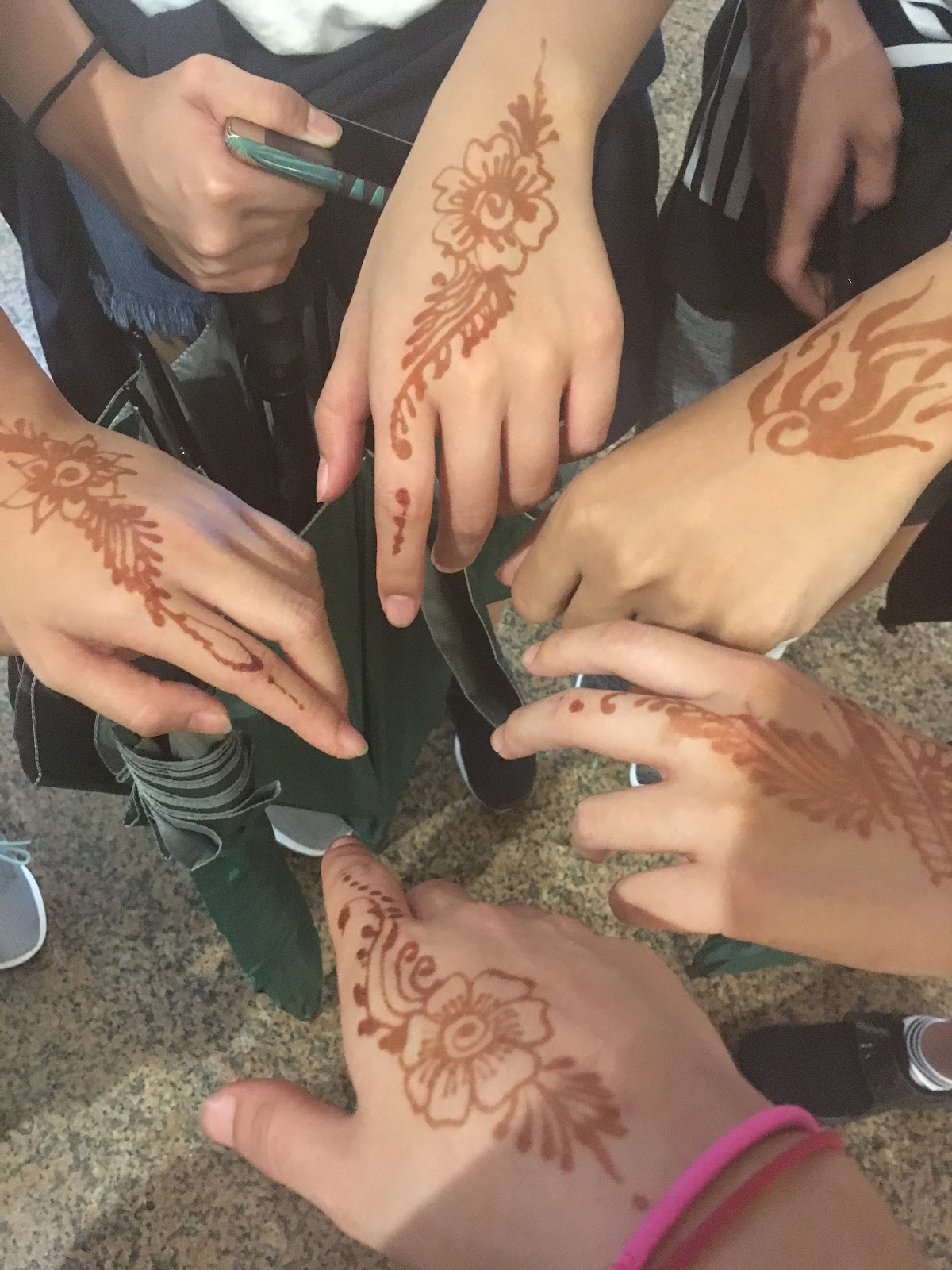 |
| Small henna art my friends and I got in Little India |
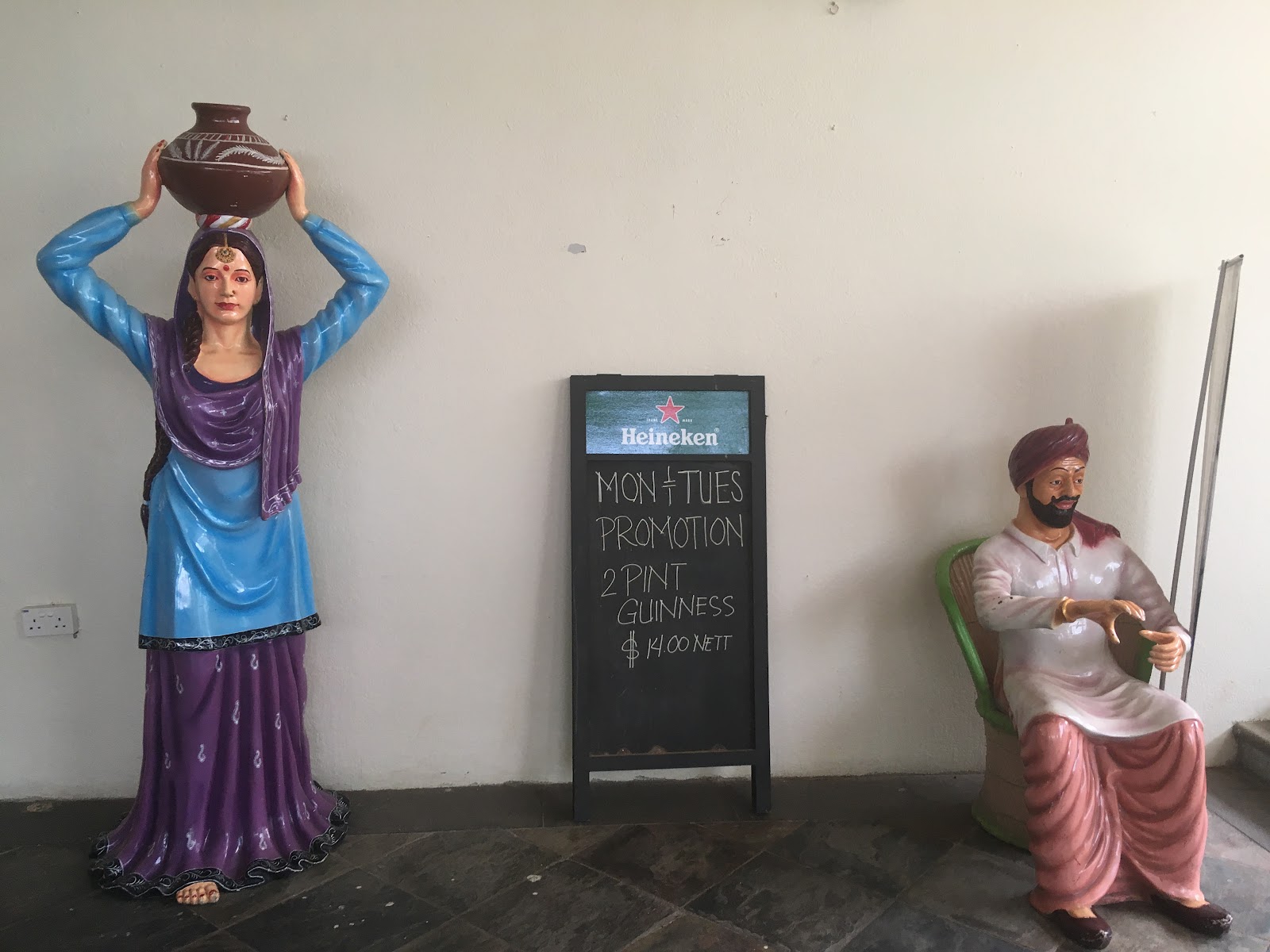 |
A few of the statues outside my new favorite Indian restaurant,
just down the road a bit in Singapore |
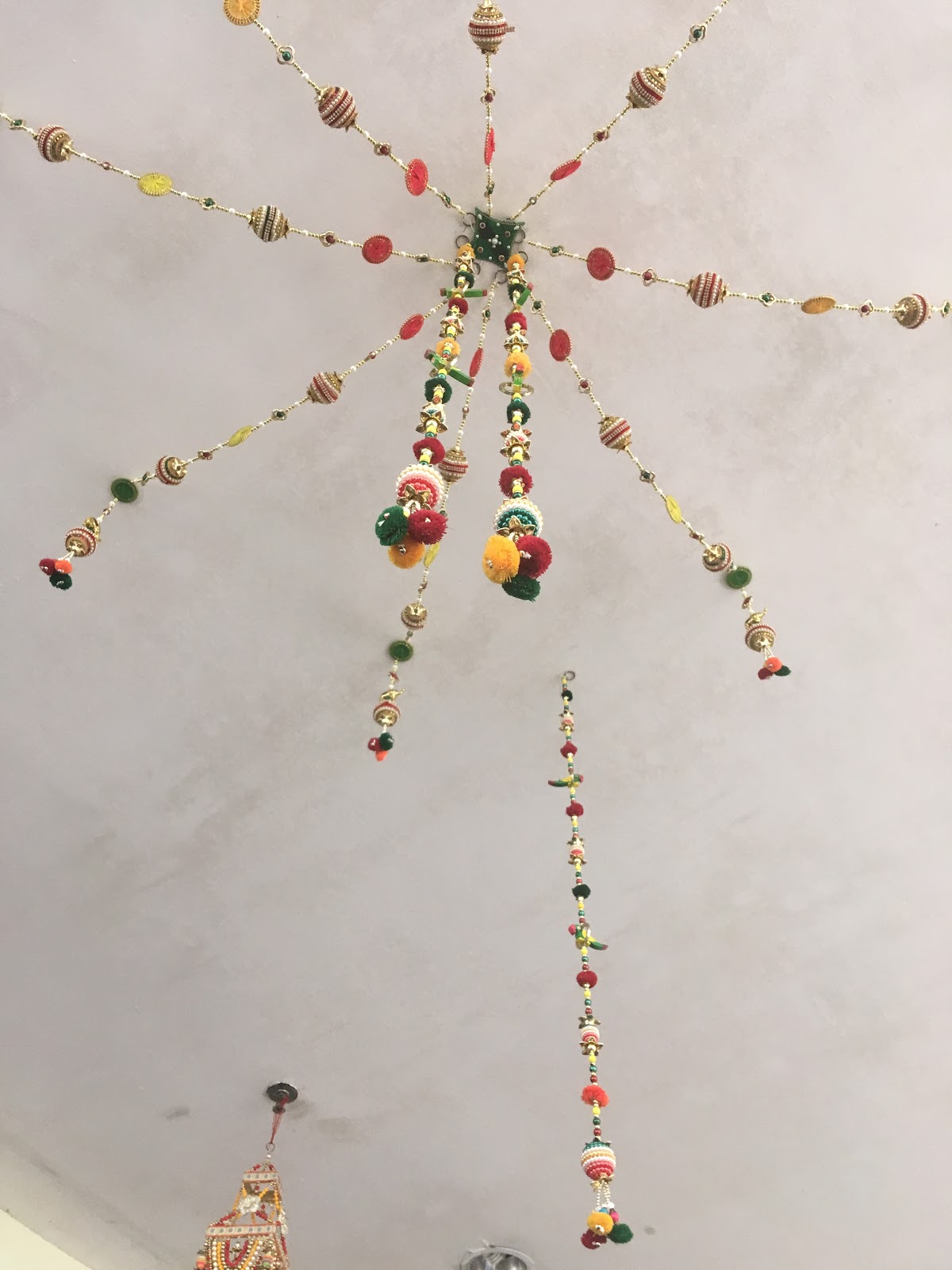 |
| ceiling decoration outside the Indian restaurant |
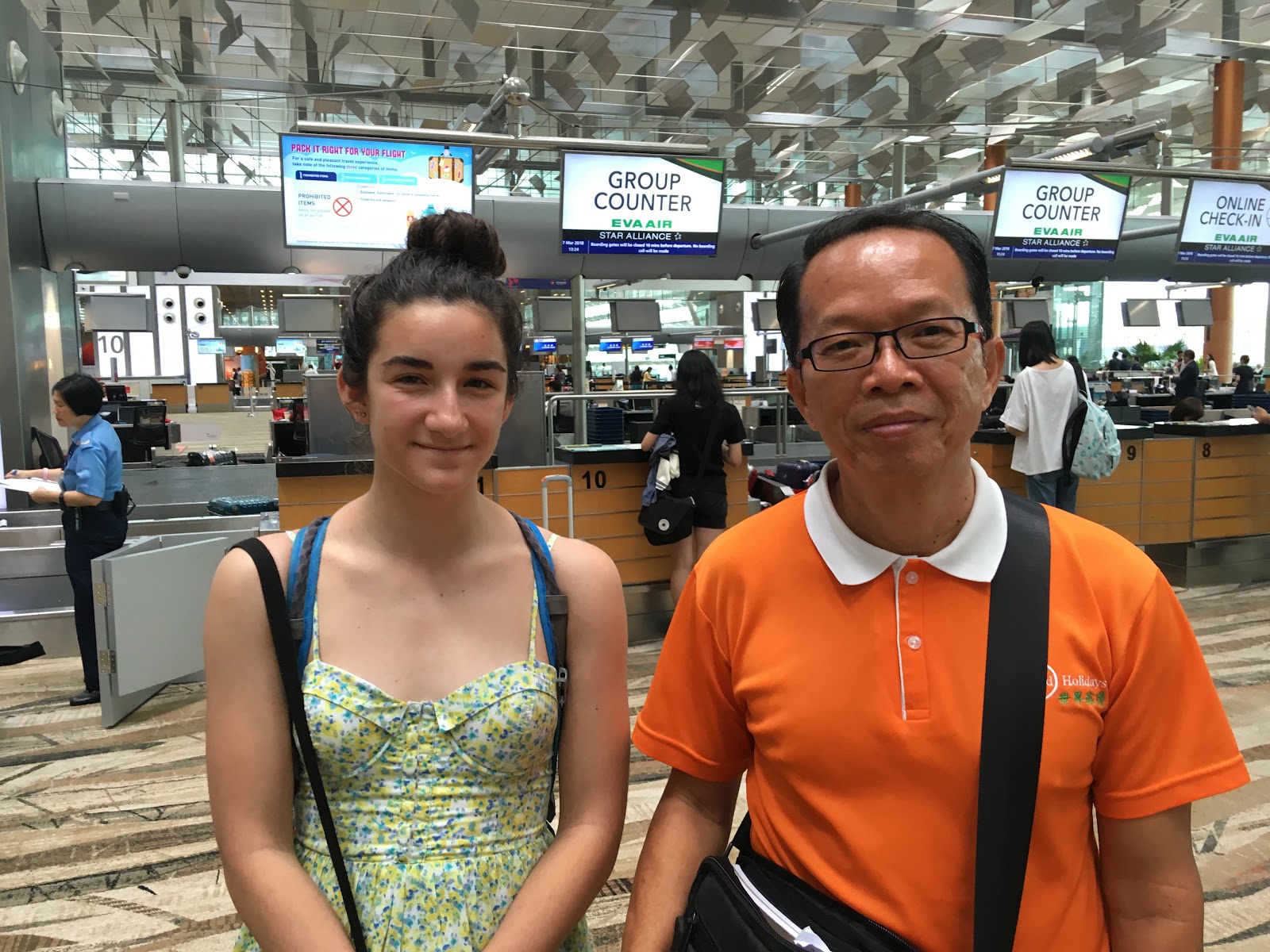 |
Our groups tour guide. Originally from the south of China,
he also speaks great English and Mandarin. My classmates thought his
accent was significant but for me his Chinese was perfect because he spoke
slowly and clearly, andI learned a lot about Singapore from him over the
five days he was our guide. |


Comments
Post a Comment